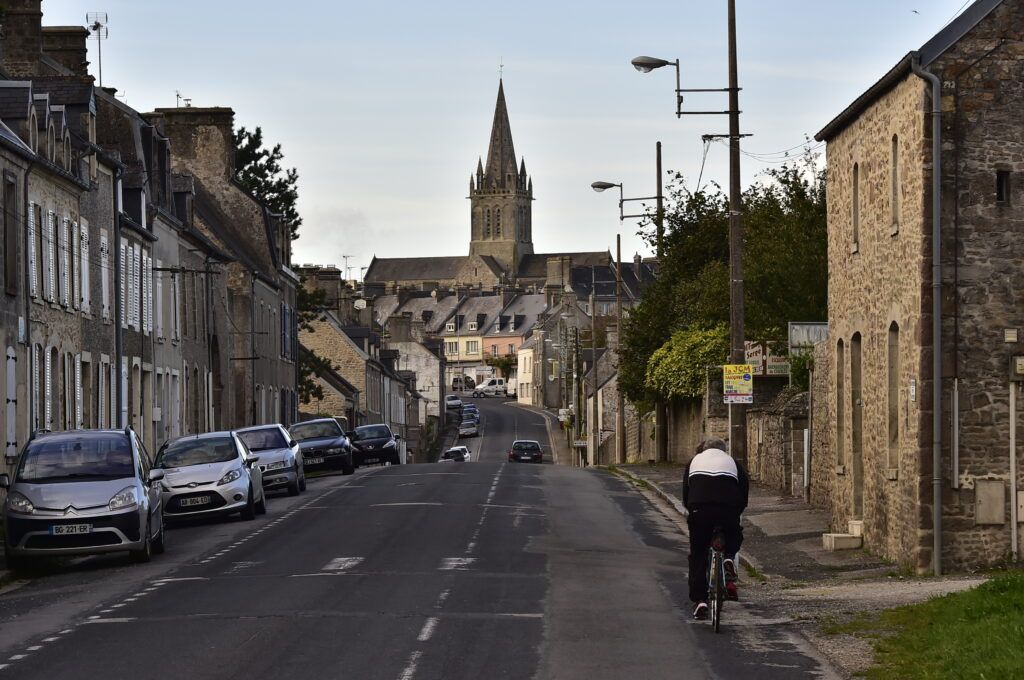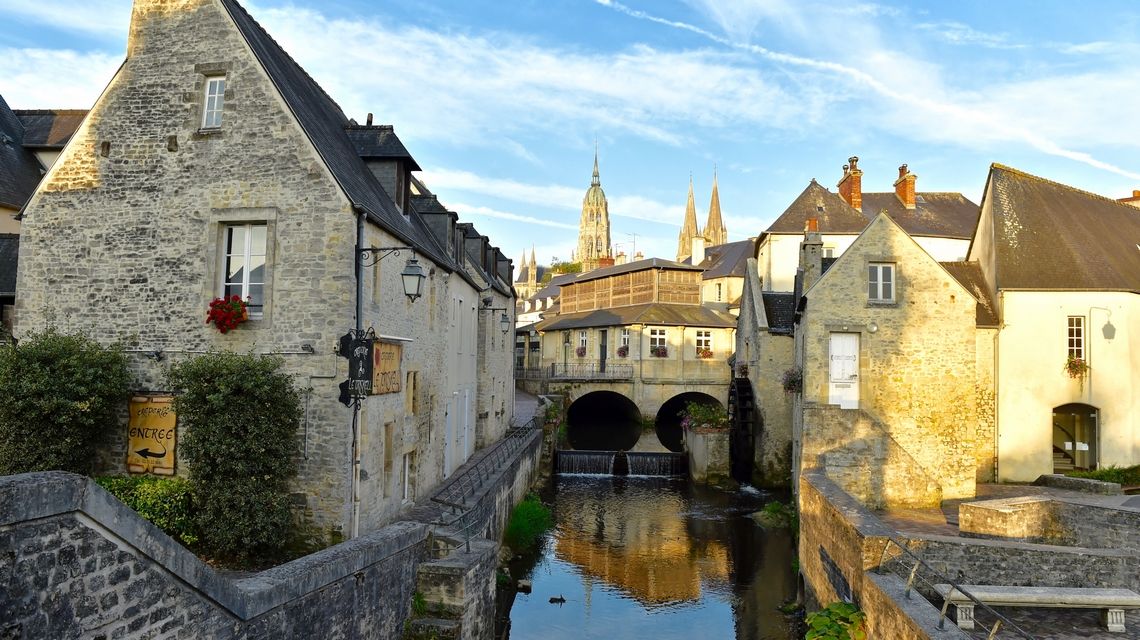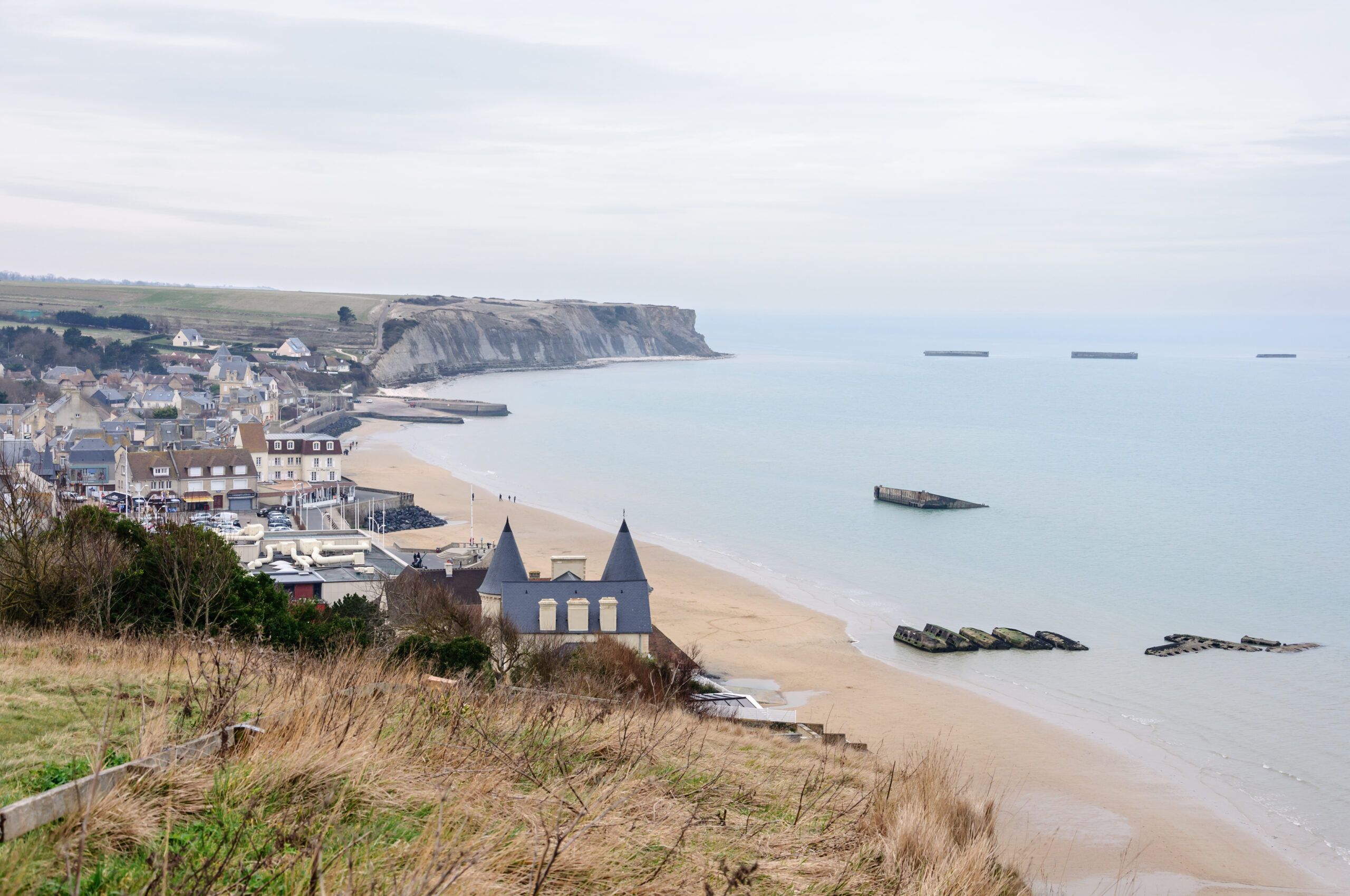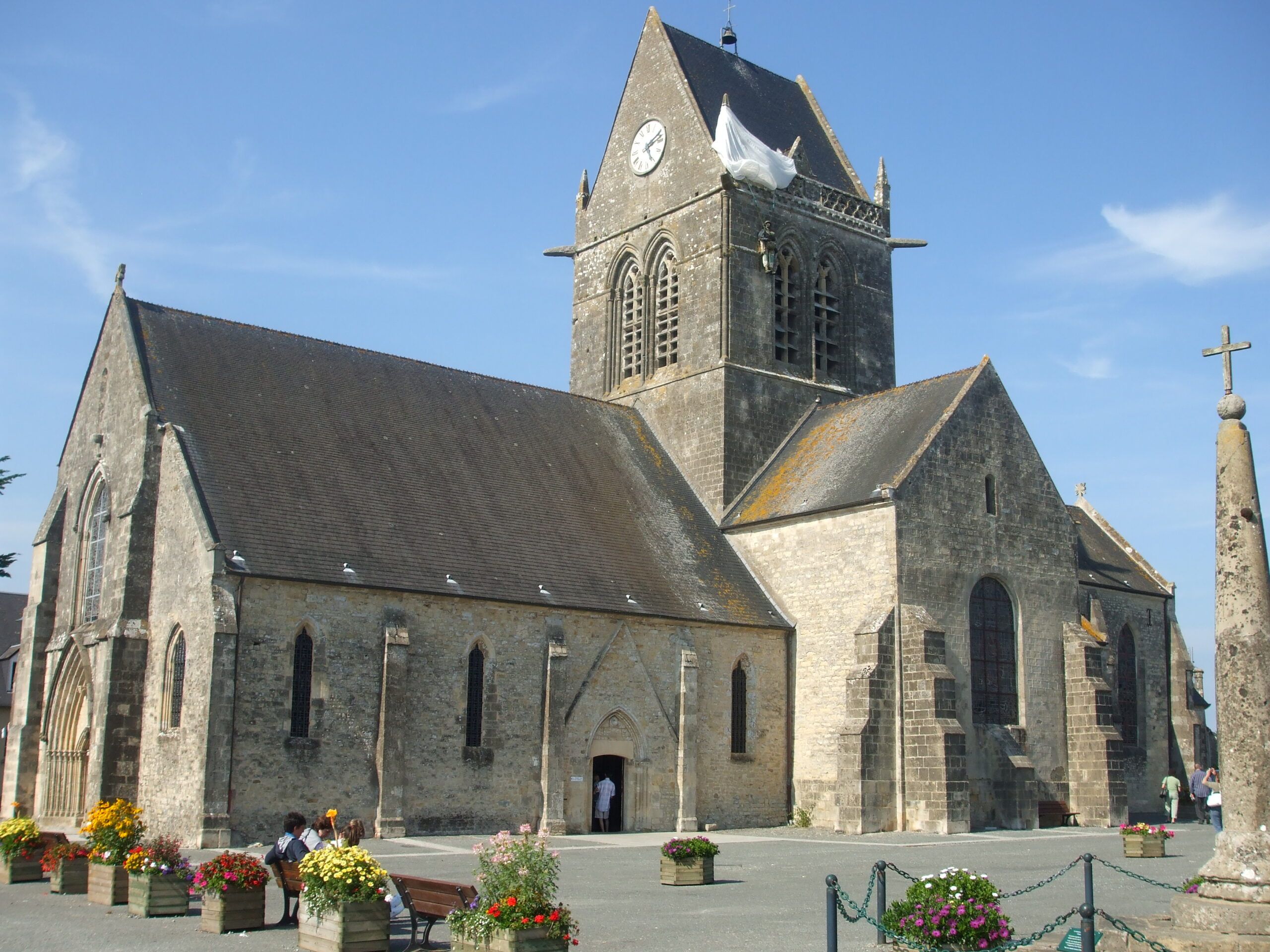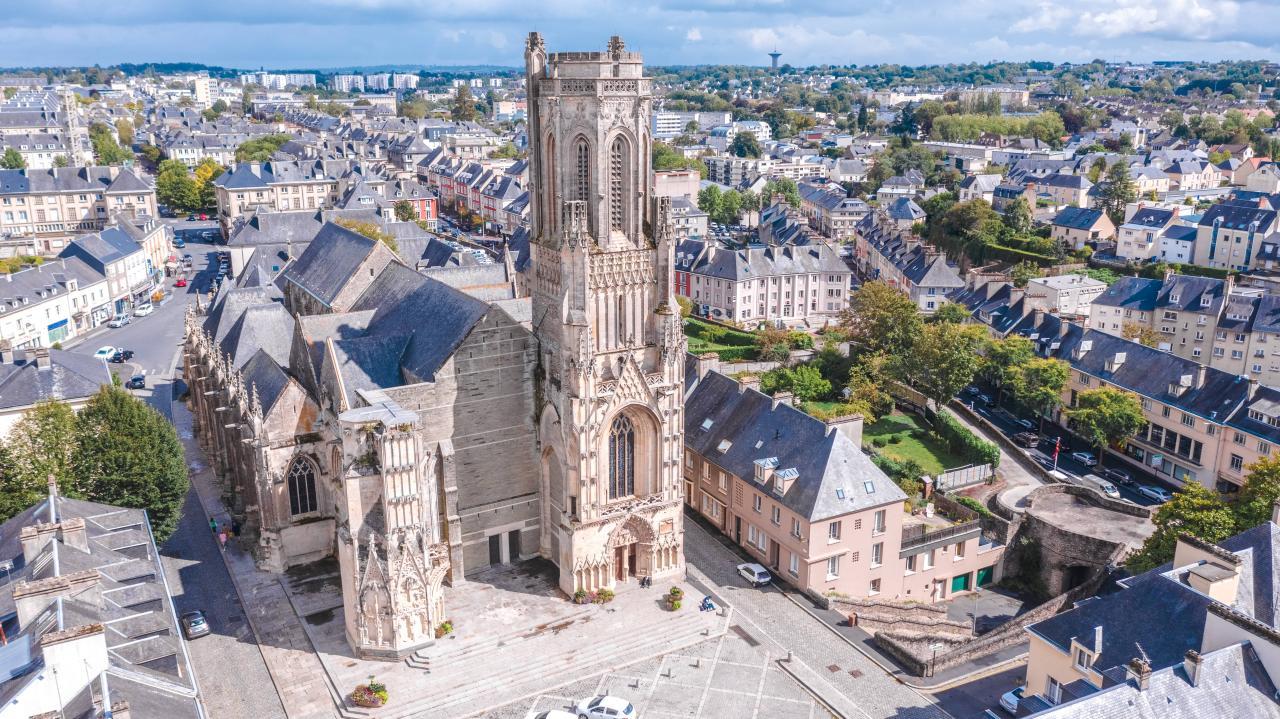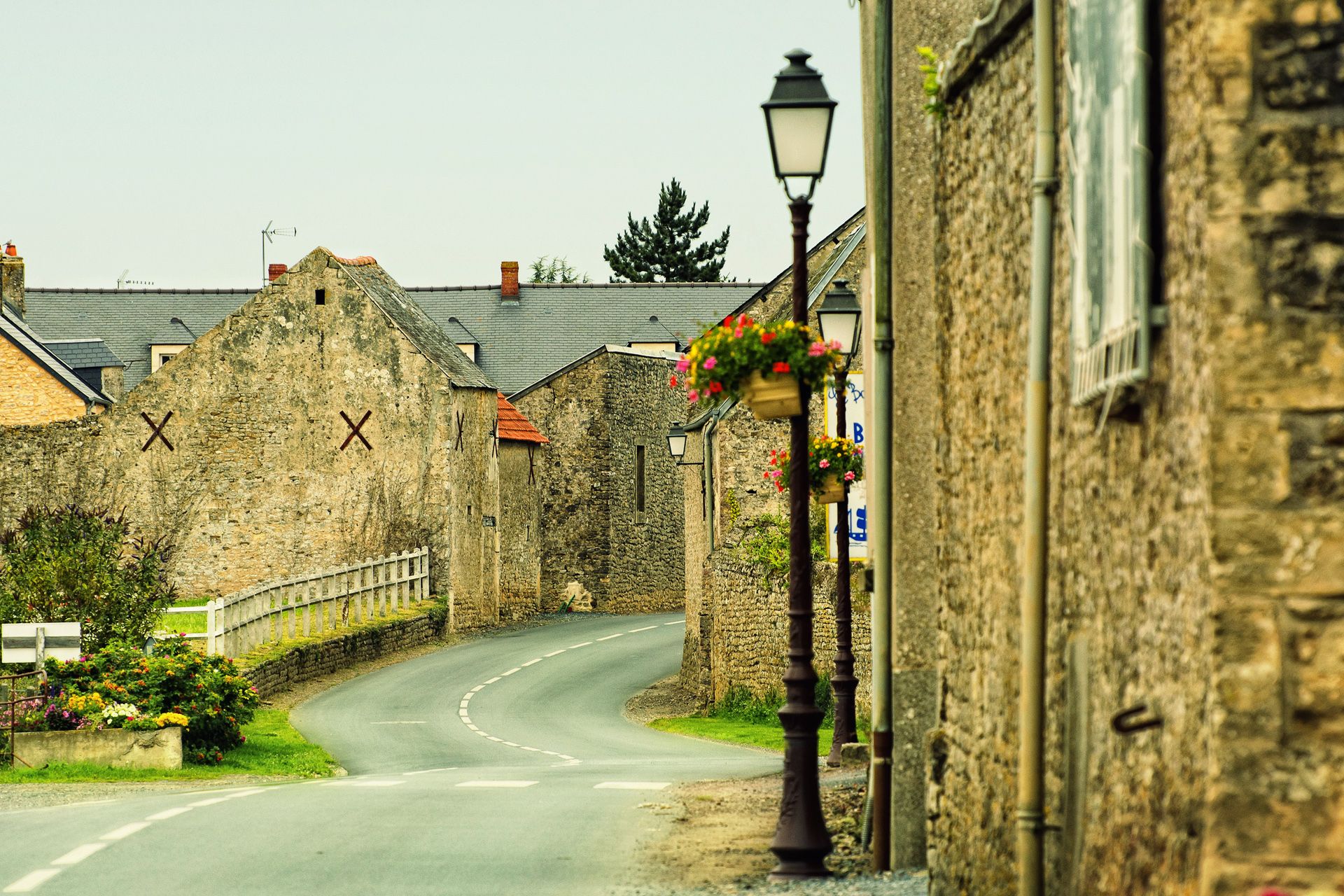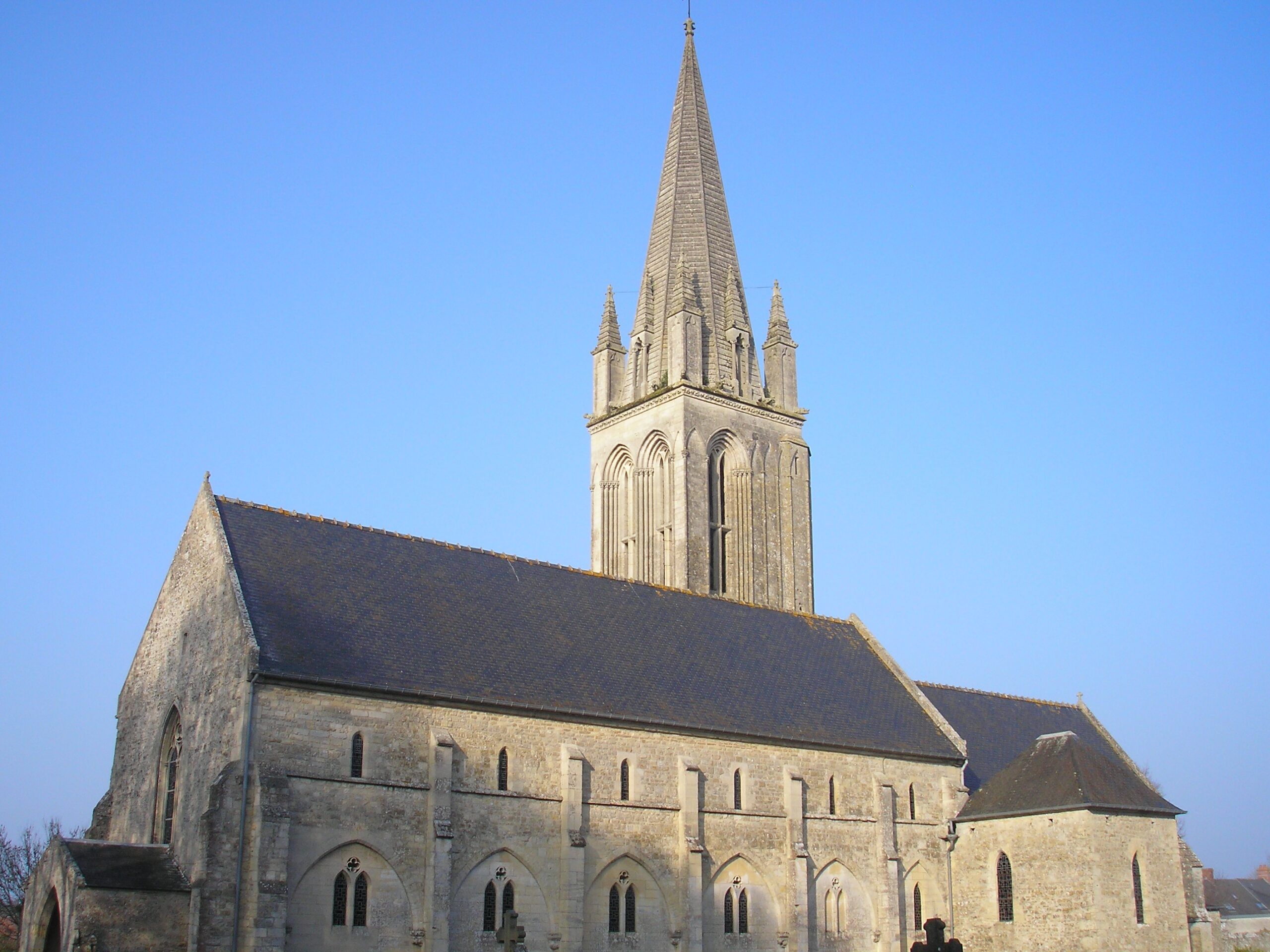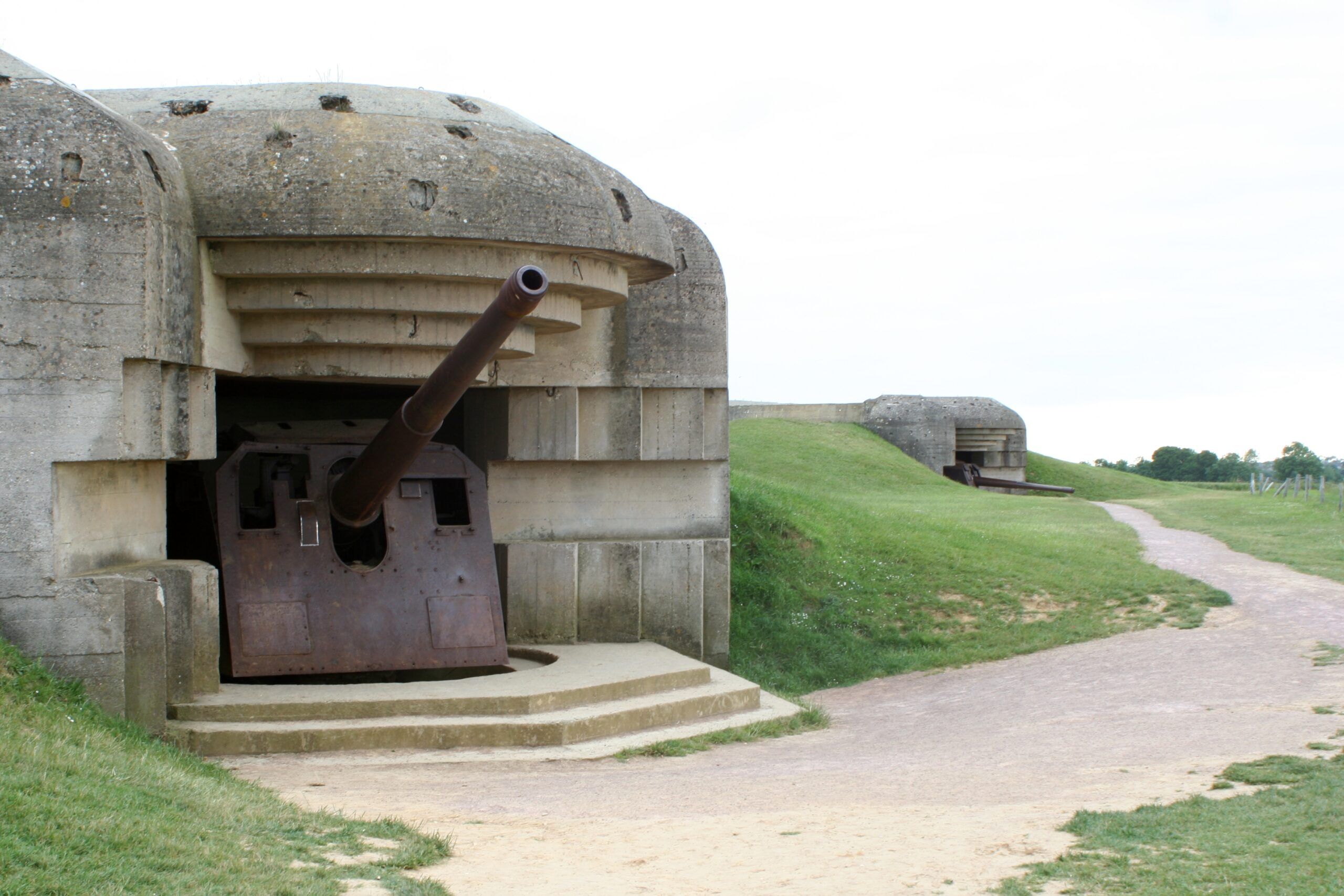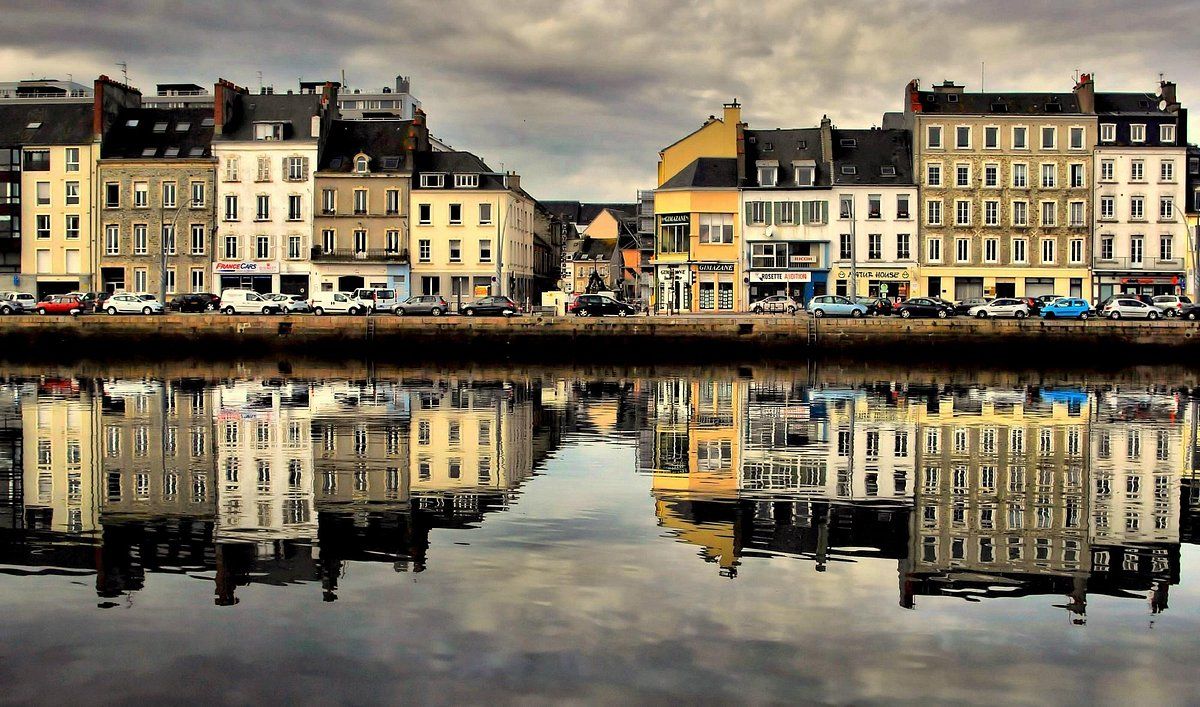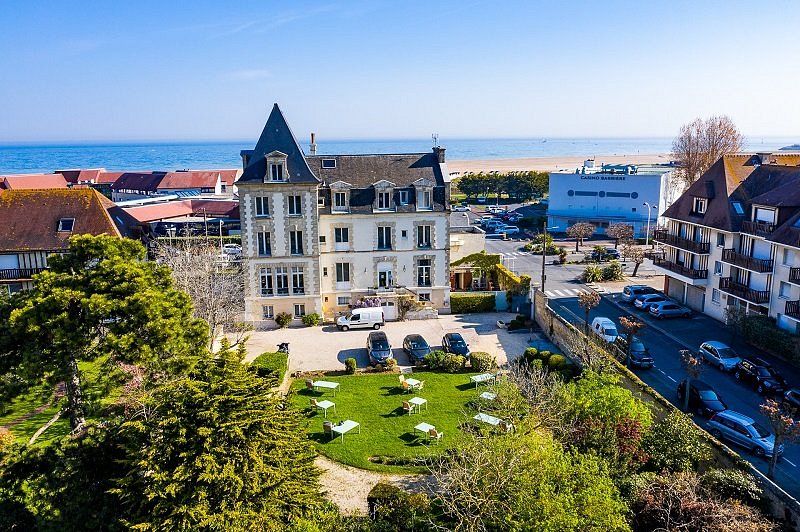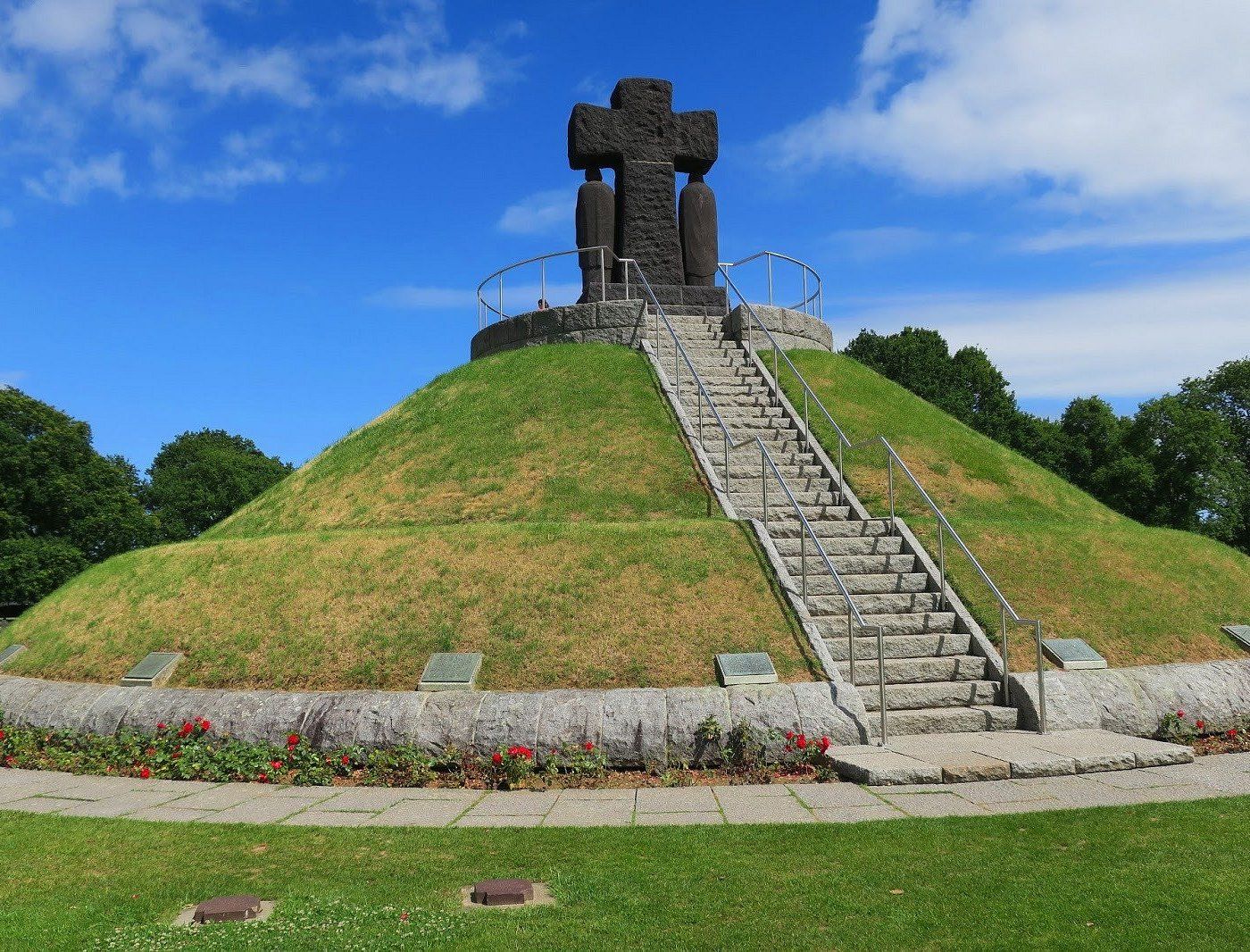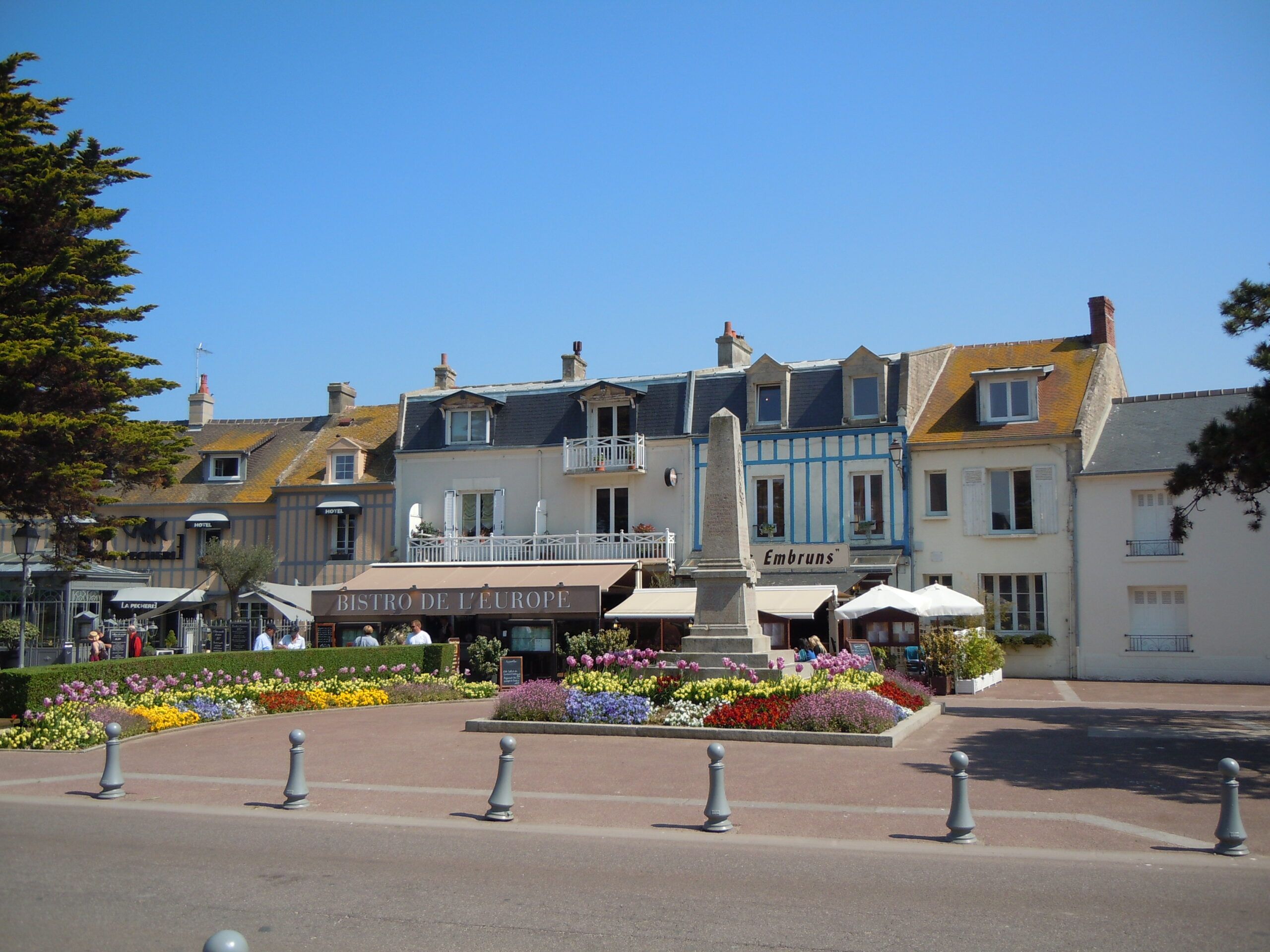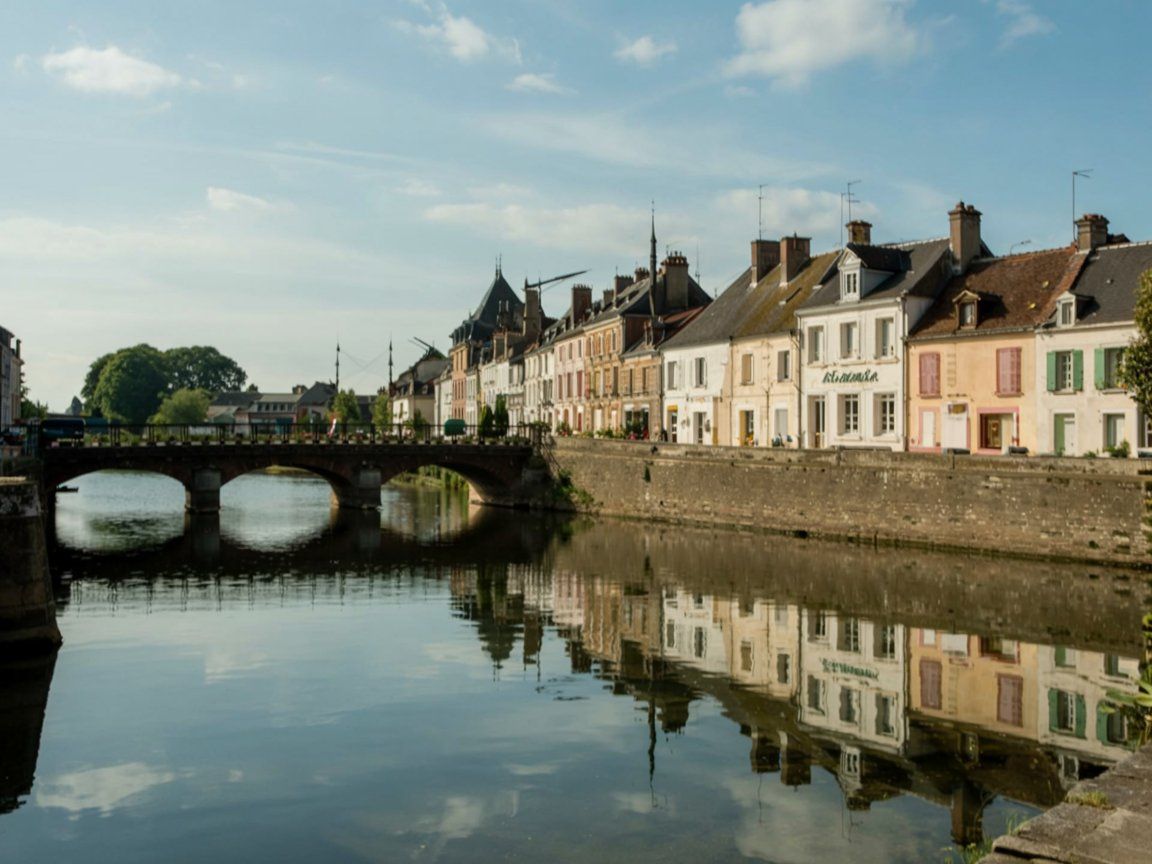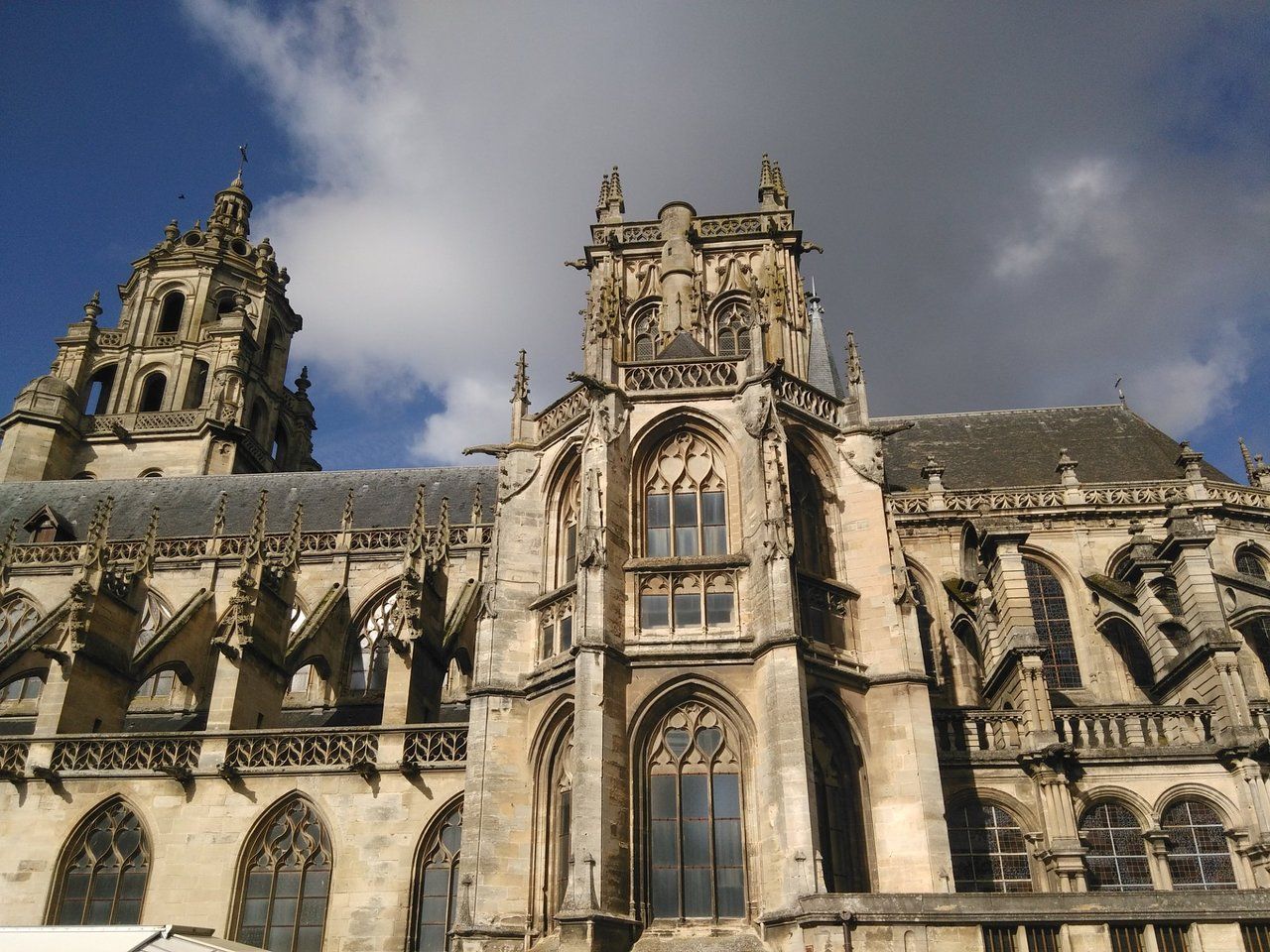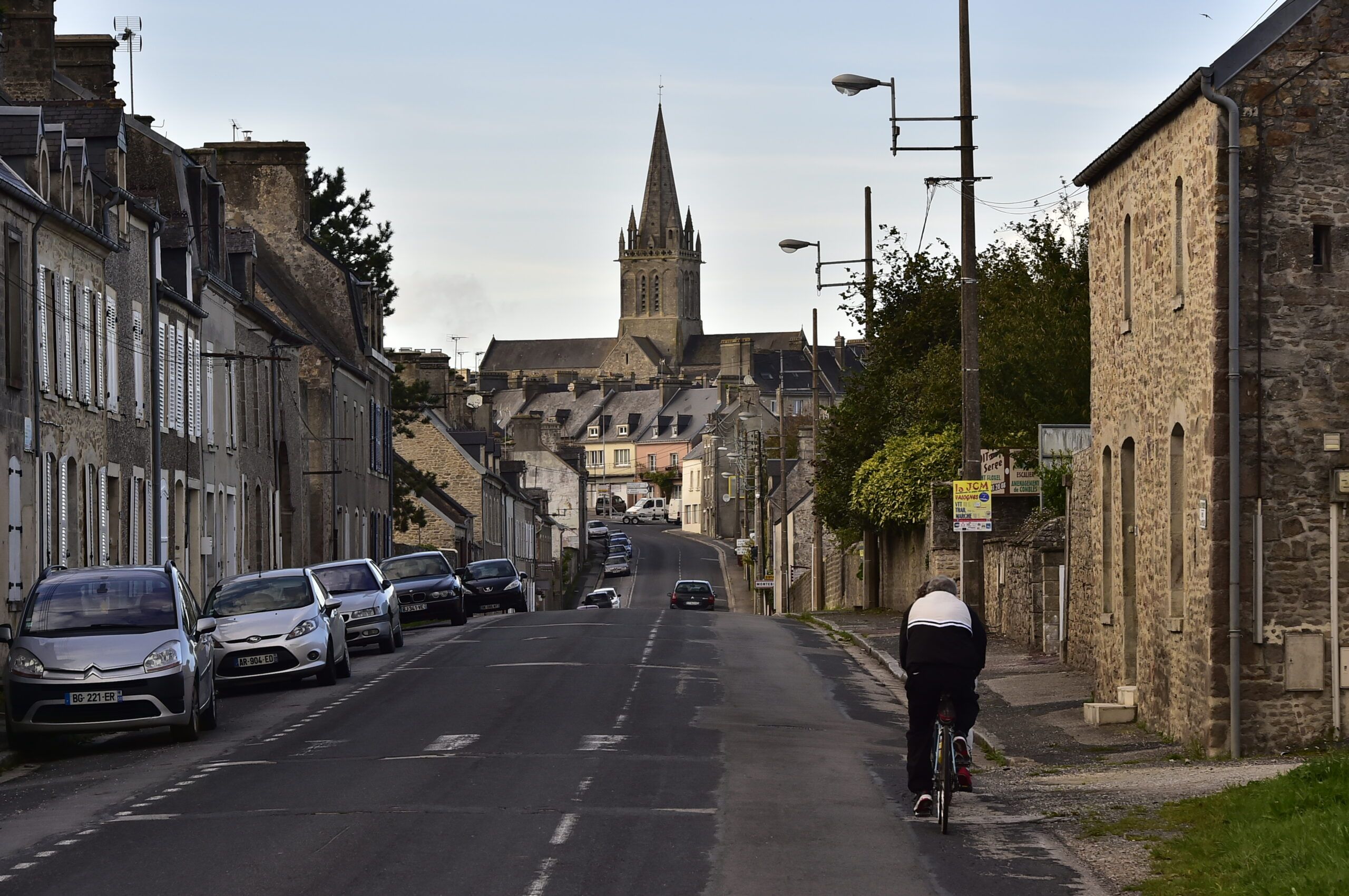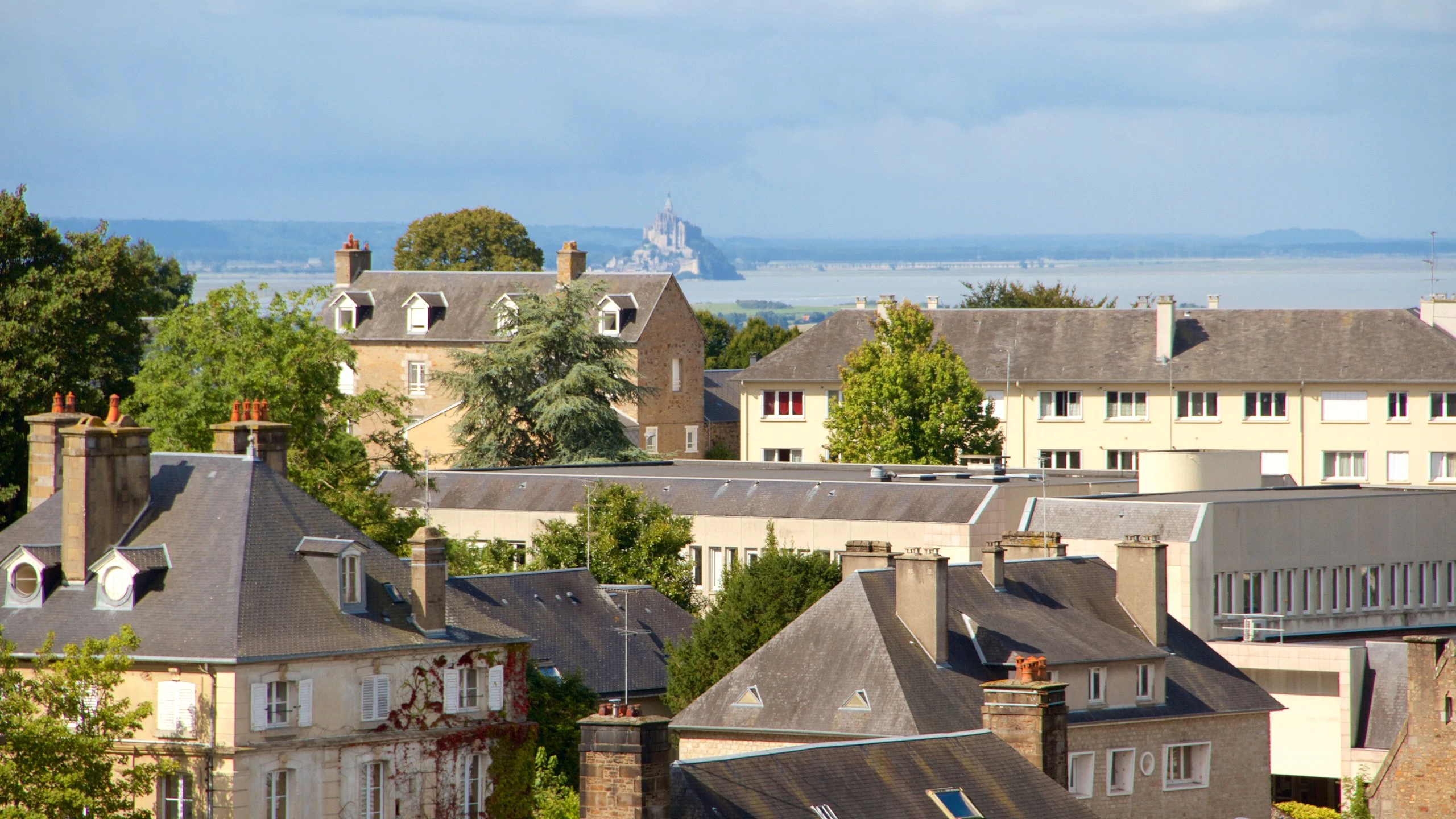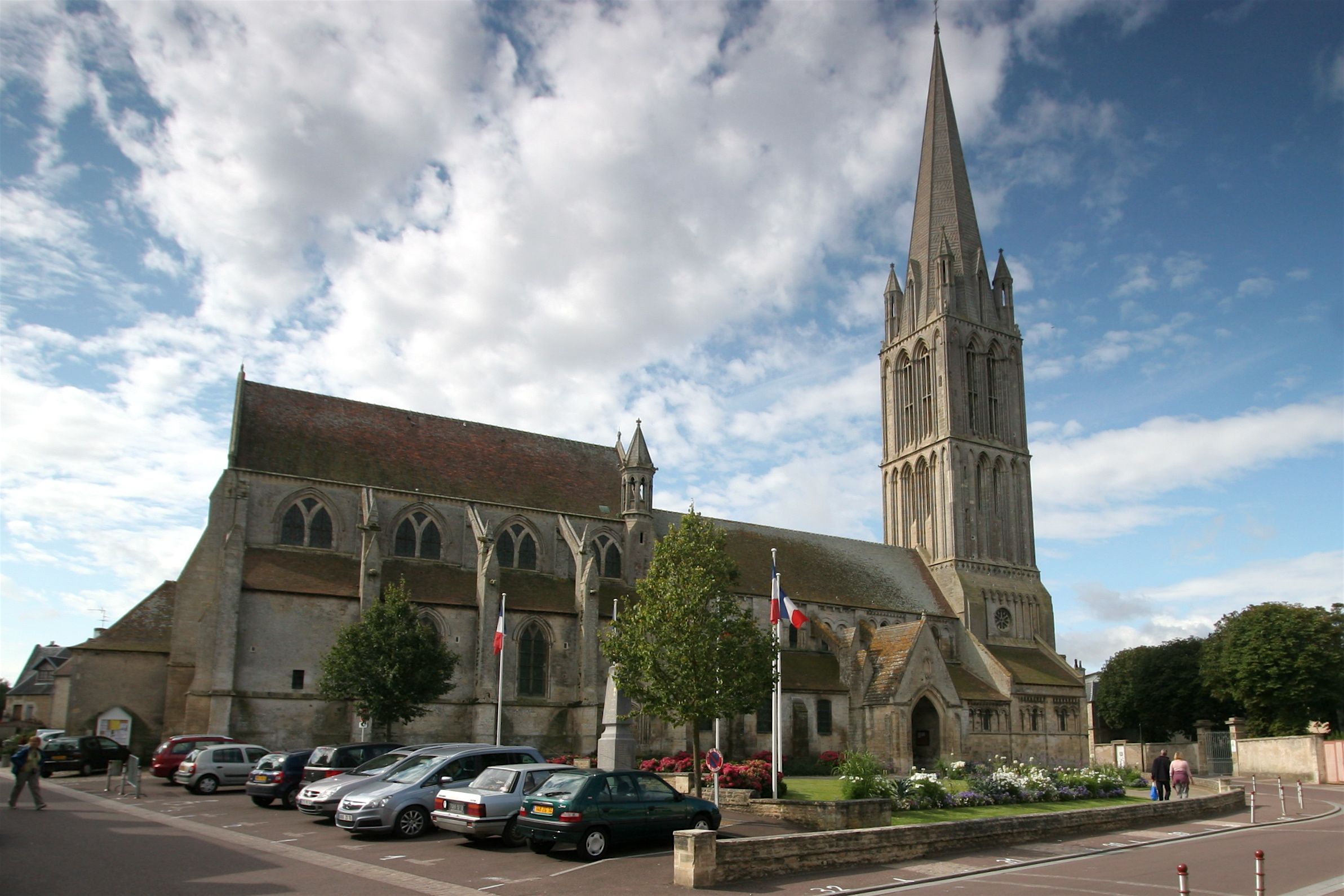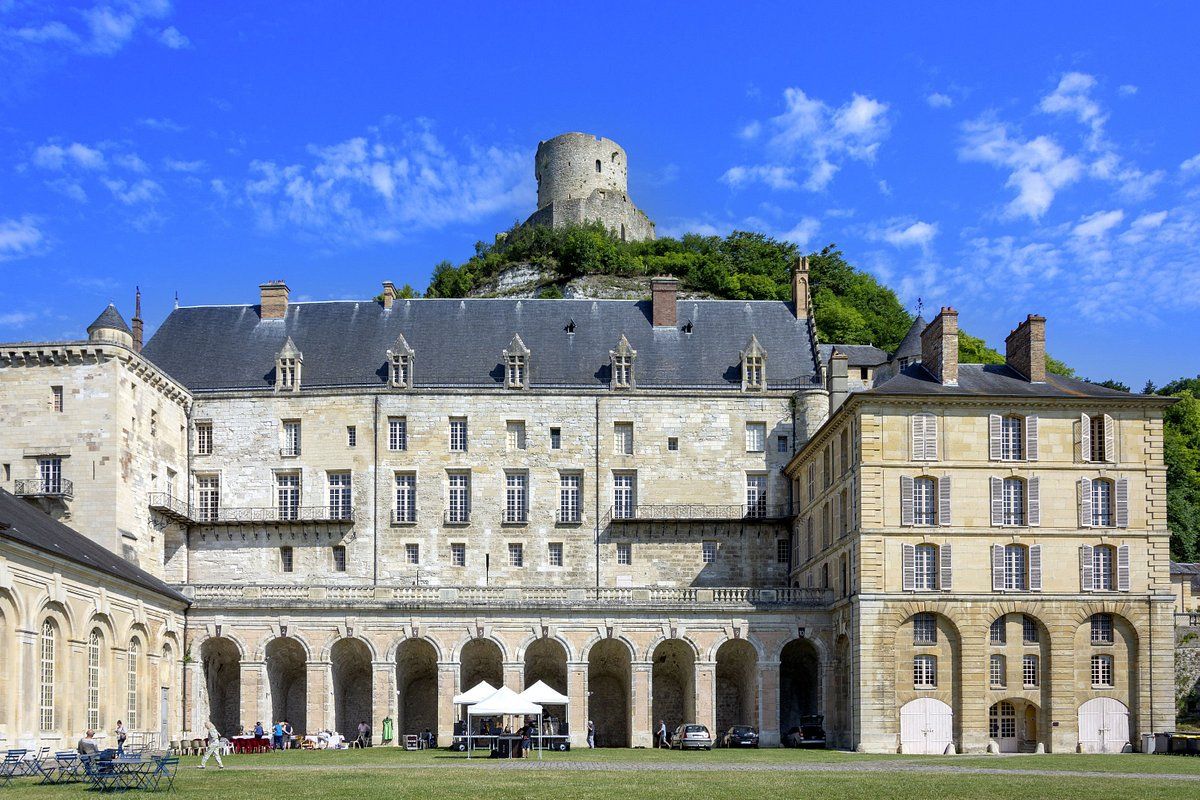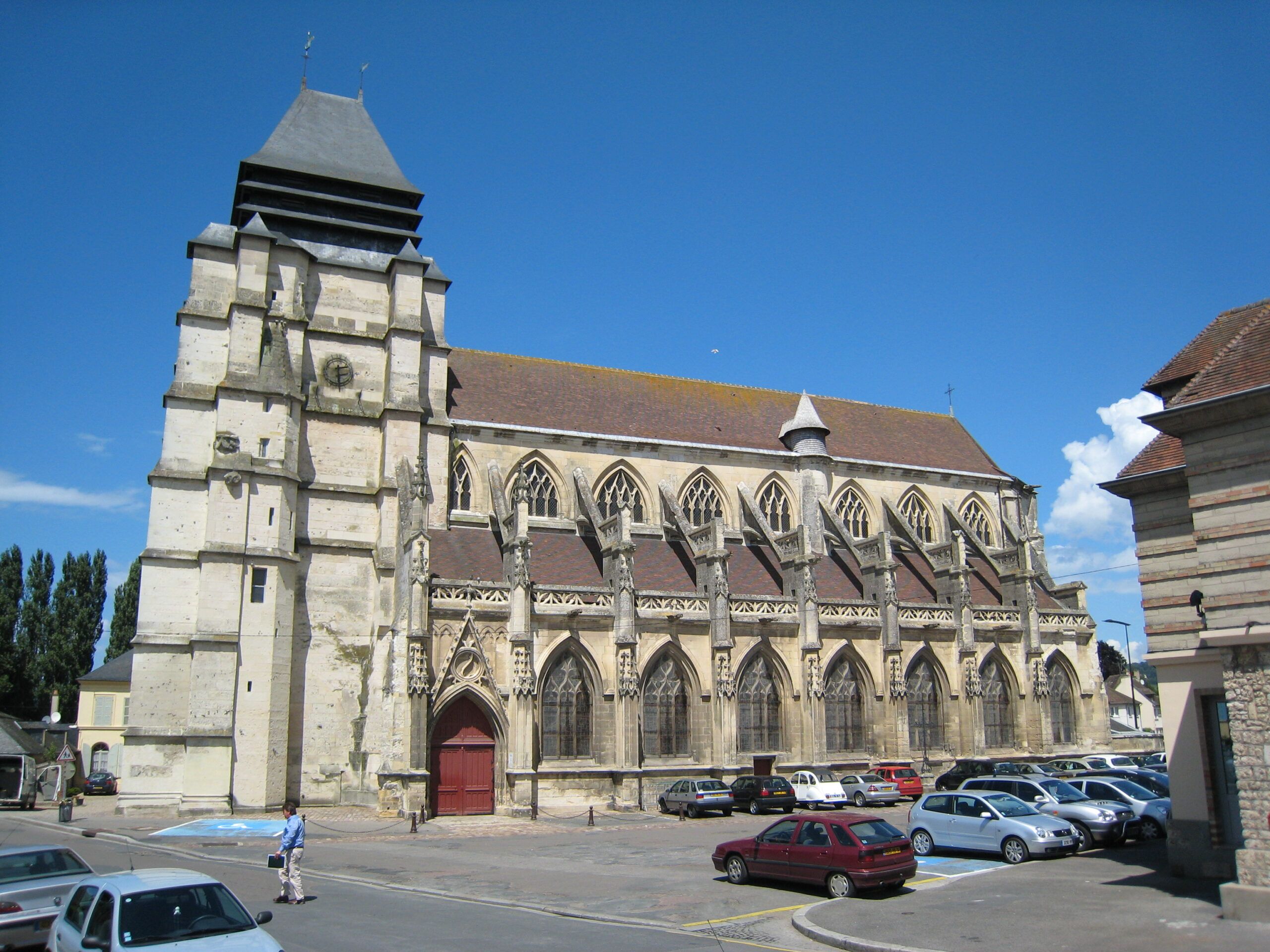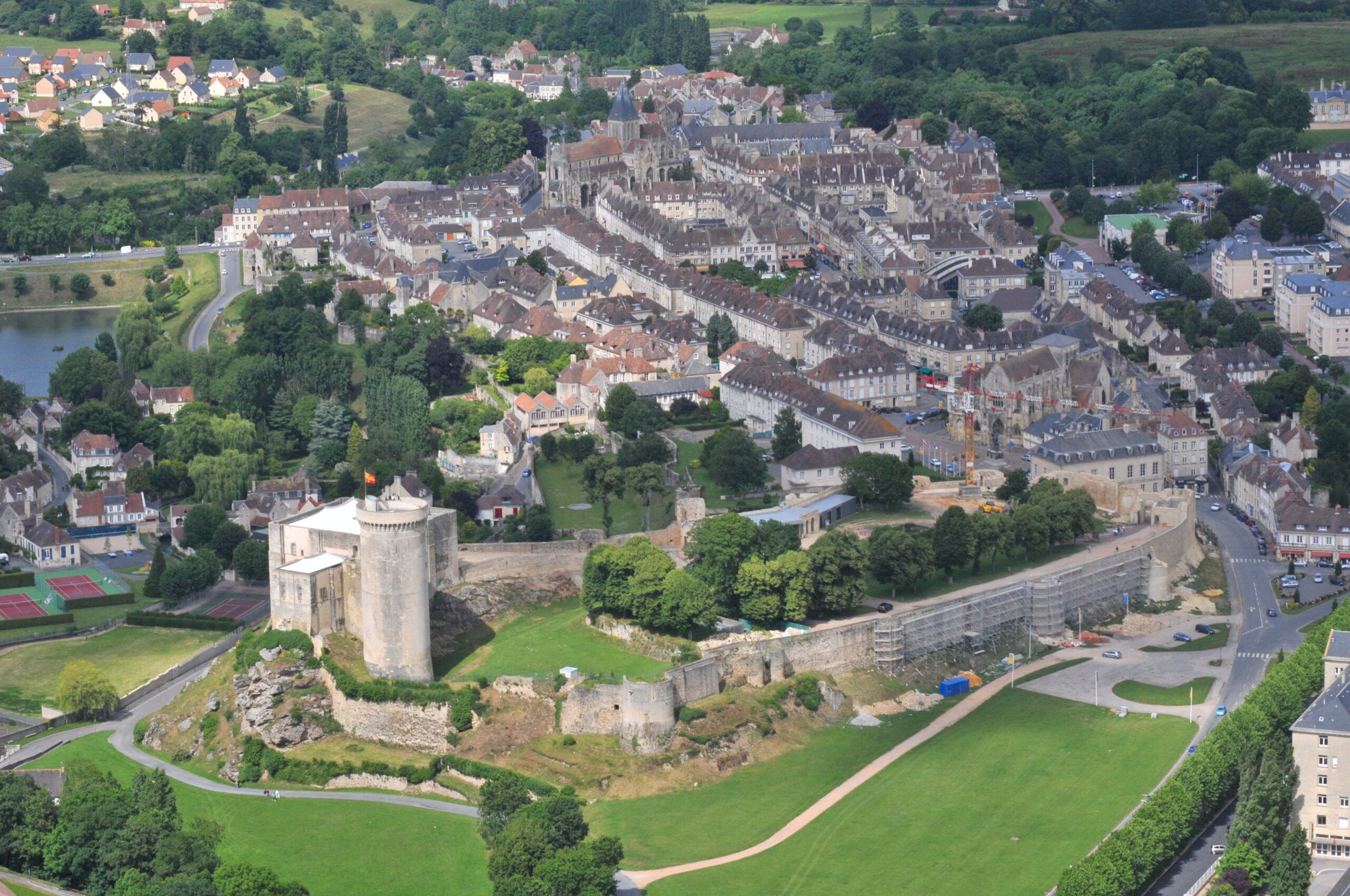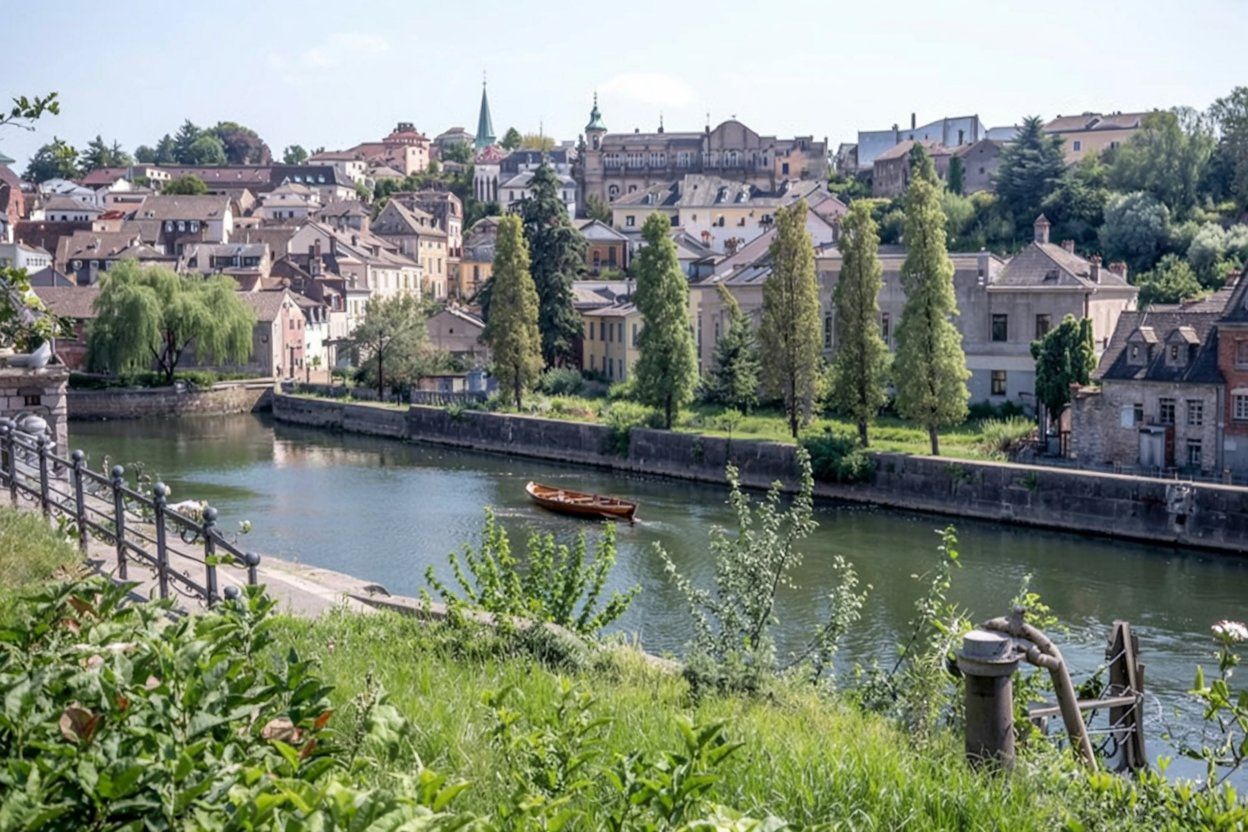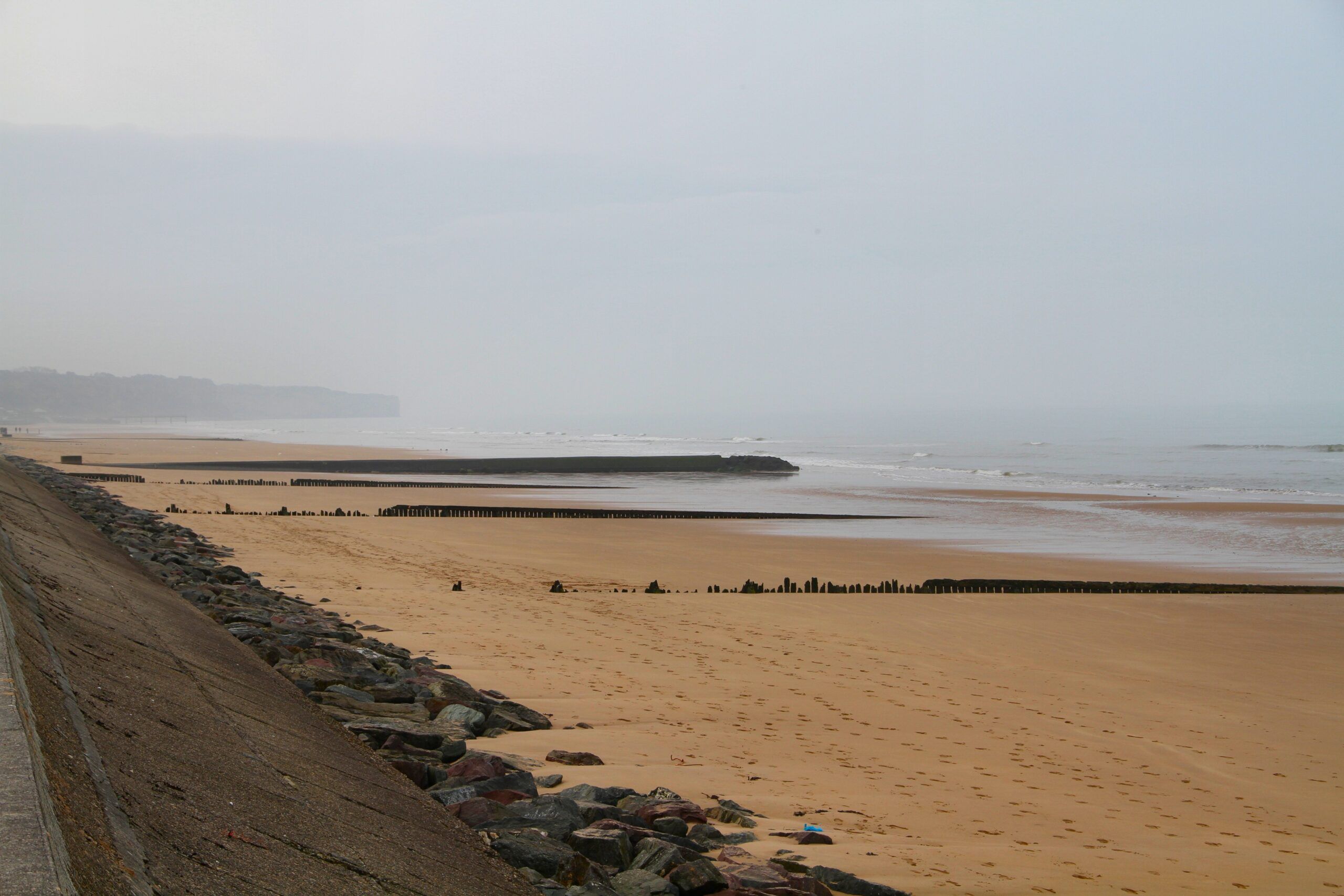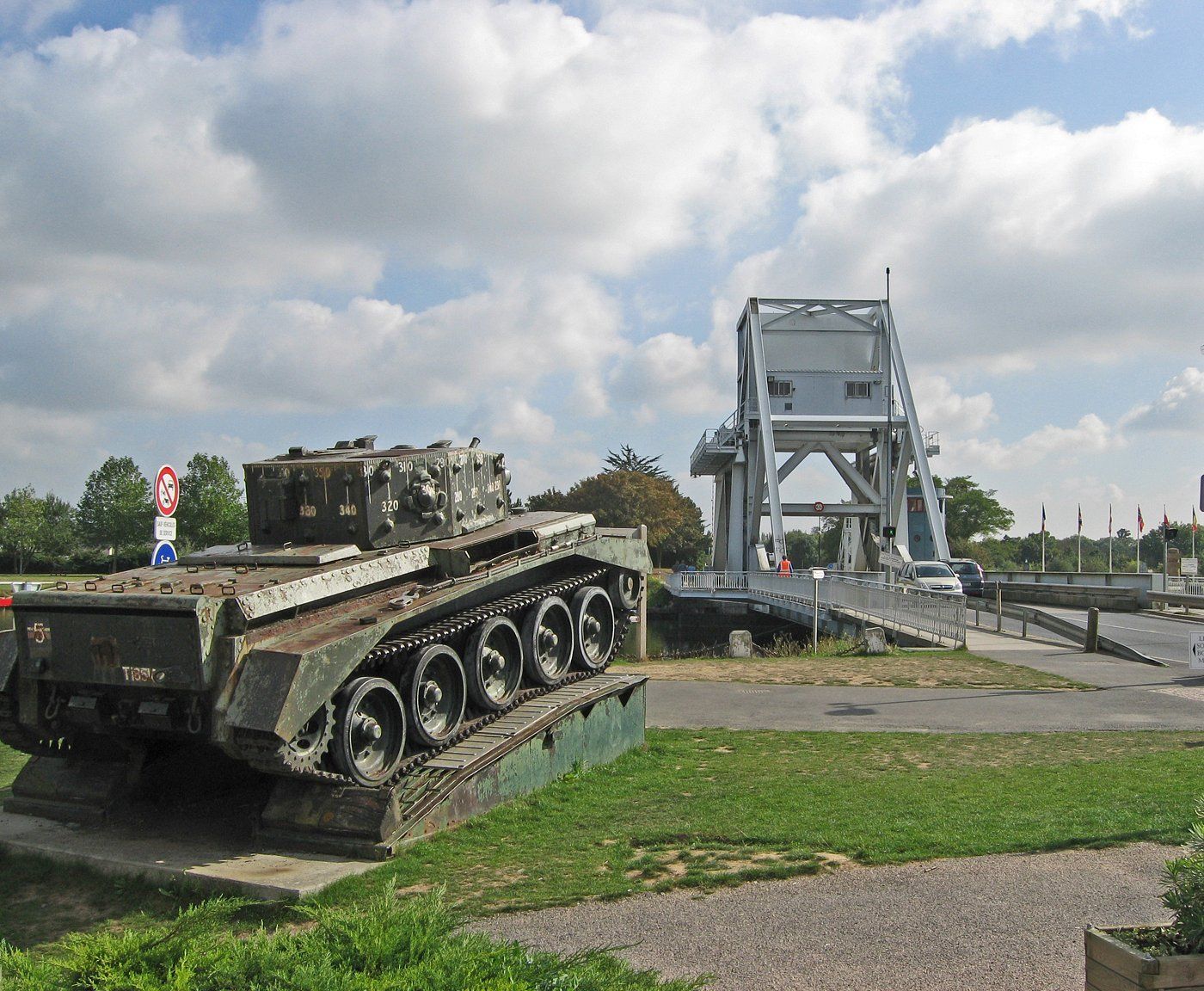Tucked away in Normandy’s countryside, Montebourg gives you a real taste of World War II history mixed with laid-back French culture. This little town played a strategic part in the Allied invasion of Nazi-occupied France back in June 1944. When you visit Montebourg, you’re just a short drive from the D-Day landing beaches that run along 70 kilometers of Normandy’s coast—where the largest seaborne invasion in history took place.
Montebourg isn’t right on the sand, but its spot makes it a great starting point for exploring the D-Day sites. The town saw heavy fighting during the Battle of Normandy as American troops pushed inland from Utah Beach. Today, you’ll notice traces of that history alongside buildings that have been restored, showing how the region bounced back.
Visit Recommended D-Day historic hotels and B&Bs along the invasion beaches.
Montebourg manages to honor its wartime past while still feeling like a classic Norman small town. Local markets, old stone buildings, and hearty regional food give you a true French experience—without the big tourist crowds. If you’re planning a visit, it’s worth spending a few days to soak up both Montebourg itself and the nearby D-Day sites that tell the story of liberation.
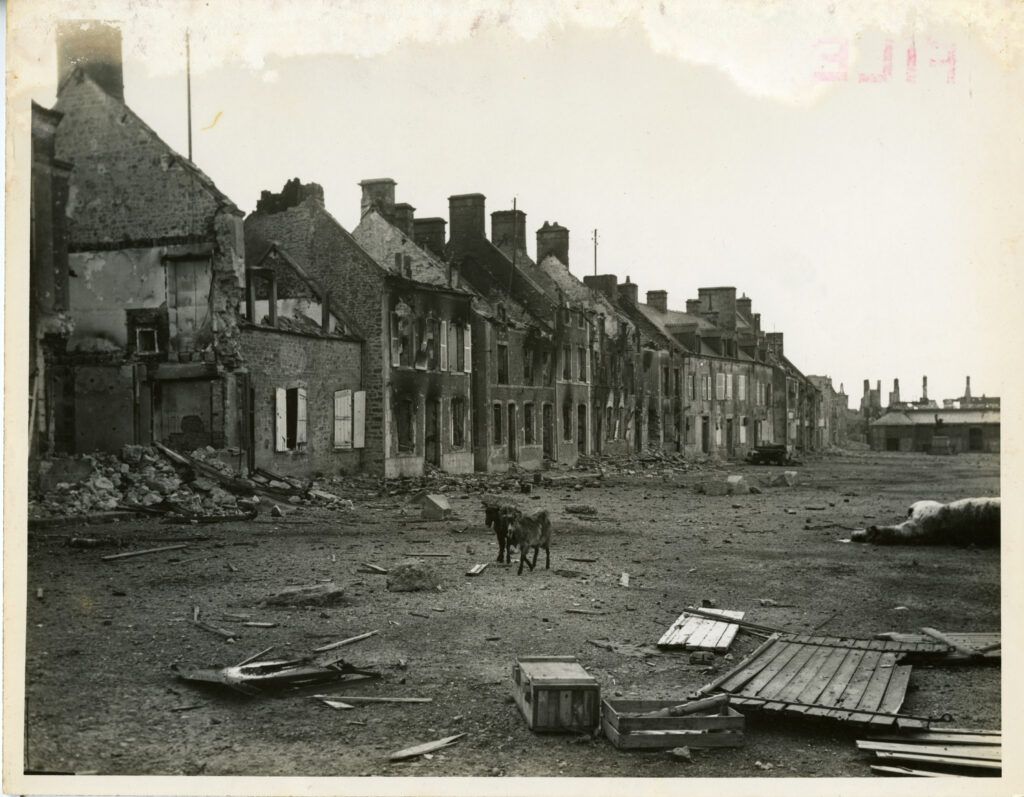
(Photo Courtesy of the Digital Collections of the National WW2 Museum)
The Strategic Role of Montebourg During World War II
Montebourg held a vital spot in Nazi Germany’s defense during the 1944 Allied invasion. Just 8 miles from Utah Beach, this town became a hotspot for fierce combat as American forces moved inland.
Importance of Montebourg in the Normandy Campaign
Sitting at a crossroads connecting the Cotentin Peninsula to the rest of France, Montebourg was a key target for the Allies after D-Day. The road through town led straight to Cherbourg, home to one of Europe’s biggest deepwater ports—something the Allies badly needed to bring in supplies.
The U.S. 4th Infantry Division, part of VII Corps, faced the tough task of taking Montebourg as they moved north from Utah Beach. Once Allied planners realized the artificial Mulberry harbors weren’t going to cut it (thanks to storm damage), Montebourg’s value shot up even more.
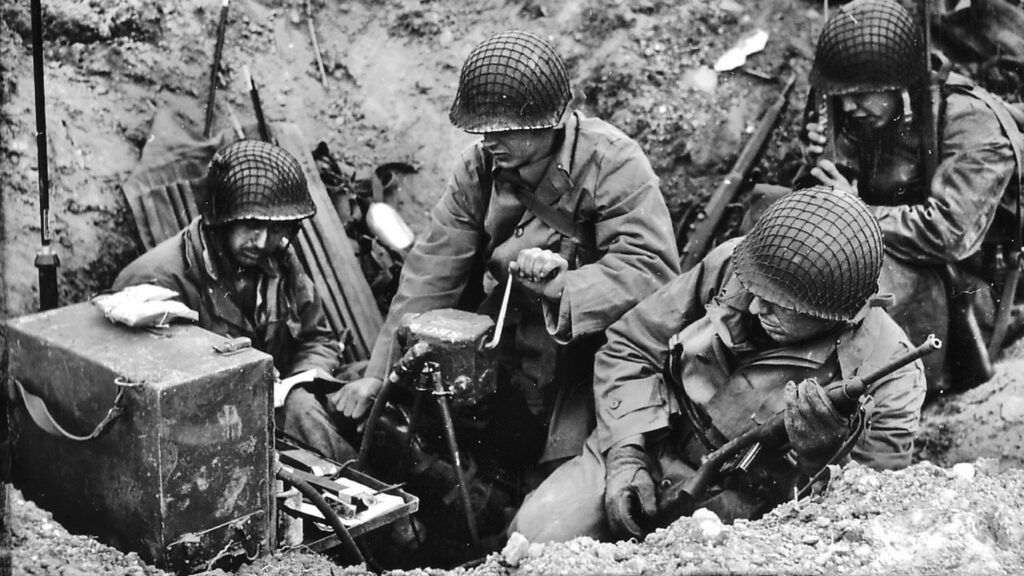
Markers still line the roads leading into town, showing the route American troops took. They had to secure Montebourg before isolating and capturing the Cherbourg peninsula.
German Forces and Defenses in Montebourg
German troops turned Montebourg into a tough defensive stronghold under Hitler’s “Fortress Europe” plan. The 709th Infantry Division, along with parts of the 243rd, held the town with about 3,000 men.
The Germans built bunkers, machine gun nests, and artillery positions all around Montebourg—part of the Atlantic Wall that stretched along the coast. They reinforced buildings with concrete and linked them by tunnels underground.
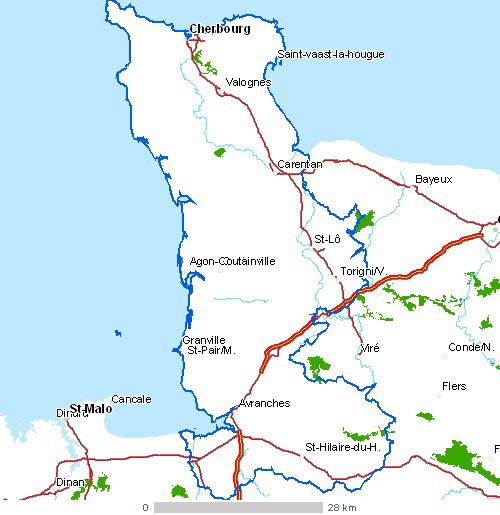
Nazi officers told their men to hold out at all costs, knowing that if they lost Montebourg, Cherbourg would be in serious danger. Snipers hid in the church tower and other tall buildings, picking off advancing Americans.
Today, you can check out several preserved German bunkers near the center of town. These concrete structures, battered but still standing, show the level of German engineering that went into their defenses.
Montebourg and the D-Day Invasion
Montebourg played a strategic part in the Allied push inland after D-Day. American troops set their sights on this small Norman town as they advanced from Utah Beach toward Cherbourg’s crucial port.
Allied Objectives in Montebourg
Taking Montebourg was a top priority for the Allies in Normandy. As a transport hub, it sat on the main road between Utah Beach and Cherbourg. The Allies needed this route open to move troops and supplies north.
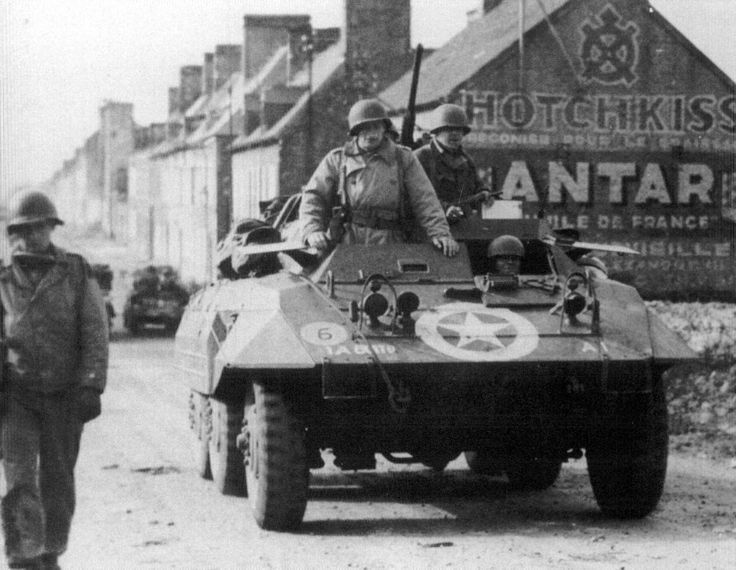
American commanders aimed to:
- Cut off German reinforcements heading south
- Secure a clear path for Allied forces moving north
- Set up a solid defensive position against counterattacks
The town’s spot made it a natural chokepoint, and the Germans dug in hard. Reports warned of heavy German defenses—artillery, reinforced infantry, the works.
Timeline of the D-Day Landings Near Montebourg
June 6, 1944: Allied troops land at Utah Beach, about 12 miles from Montebourg. Paratroopers drop behind enemy lines, sowing confusion.
June 7, 1944: American soldiers from Sainte-Mère-Église start moving up National Road 13 toward Montebourg. German resistance grows as they get closer.
June 8-9, 1944: Tough fighting breaks out in villages around Montebourg as Americans push ahead.
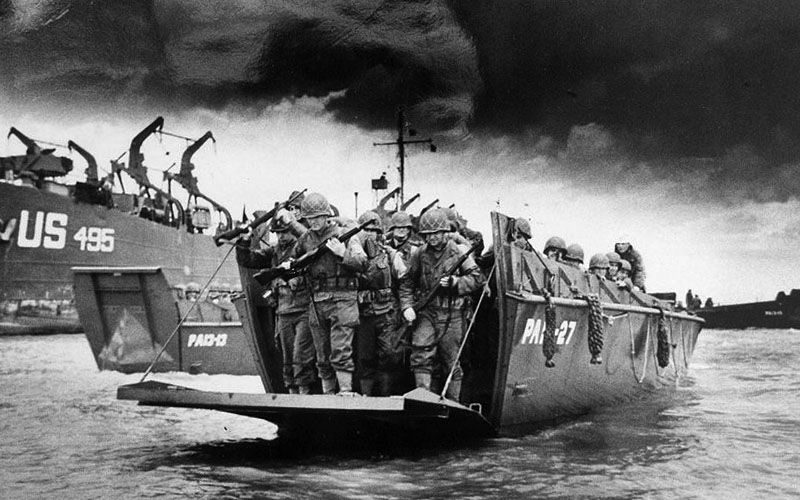
June 10-18, 1944: The battle for Montebourg rages on. American artillery hammers German positions, while infantry faces stubborn defenders.
June 19, 1944: After over a week of brutal combat, Americans finally take Montebourg, though the town is heavily damaged.
This costly victory opened the way for the Allies to move on Cherbourg.
Involvement of Paratroopers and 4th Infantry Division
The assault on Montebourg brought together two major American units. Paratroopers from the 82nd and 101st Airborne Divisions dropped behind enemy lines before dawn, throwing German communications into chaos around Montebourg.
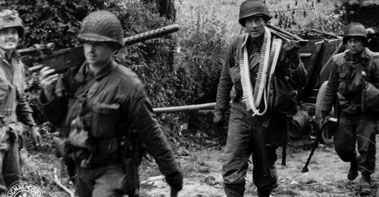
The 4th Infantry Division, landing at Utah Beach, led the main attack on the town. Their advance wasn’t easy—they dealt with:
- Flooded fields (thanks to the Germans)
- Well-hidden machine gun nests
- Constant artillery fire
- Concrete bunkers
The fighting turned into gritty, house-to-house combat. Soldiers used bazookas and flamethrowers to clear out fortified spots. Losses were heavy, but the Americans slowly took control of the outskirts and then the town center.
This battle showed how effective coordinated attacks could be, but it also made clear just how tough the Normandy campaign was.
Battles and Aftermath in the Cotentin Peninsula
The Cotentin Peninsula saw intense fighting after D-Day as Allied troops pushed inland to secure key objectives. These battles shaped the outcome of the Normandy campaign and left lasting scars on towns like Montebourg.
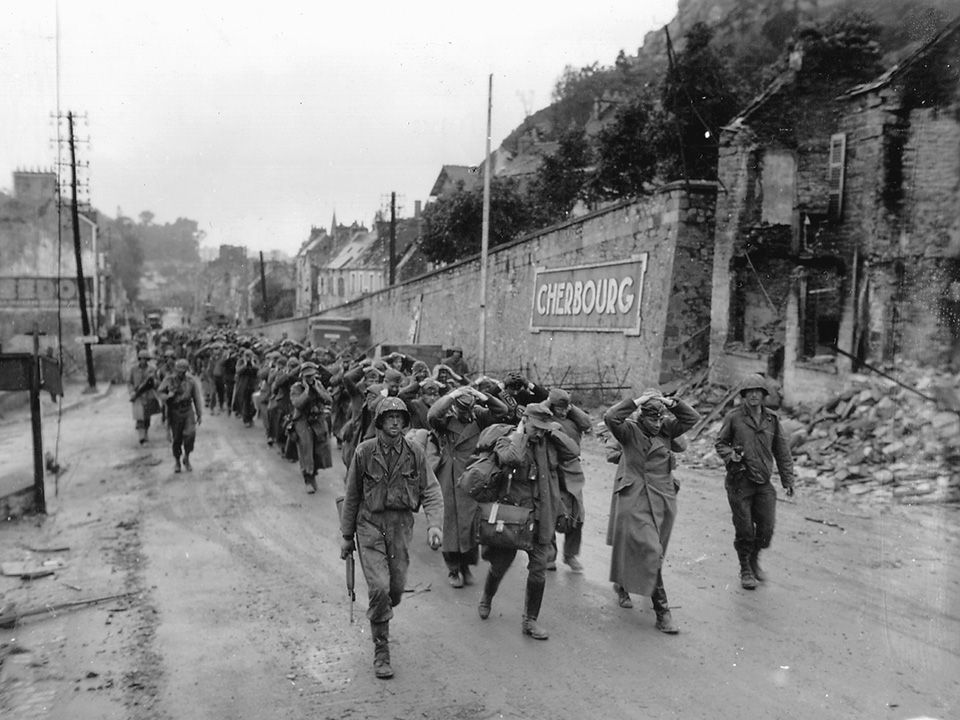
(Photo Courtesy of The National WWII Museum)
Battle for Caen and Its Impact on Montebourg
While British and Canadian forces fought for Caen to the east, that drawn-out struggle affected the whole region, including Montebourg. The Germans shifted a lot of resources to defend Caen, which gave American troops an opening in the Cotentin Peninsula.
Montebourg, about 20 kilometers south of Cherbourg, became a hotspot. The town changed hands more than once in June 1944. American soldiers from the 4th Infantry Division met fierce resistance from German defenders determined to slow them down.
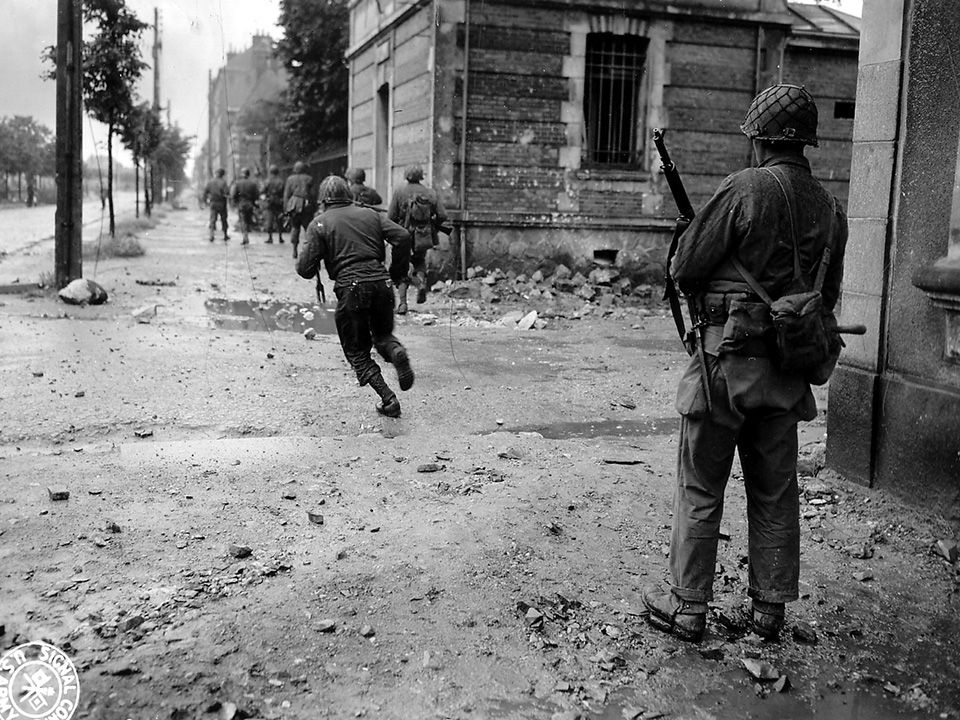
(Photo Courtesy of The National WWII Museum)
Nearly 60% of Montebourg’s buildings were damaged in the fighting. As the Germans retreated north, they destroyed bridges and infrastructure to slow the Allies even more.
Liberation of Cherbourg and Surrounding Towns
Cherbourg’s deep-water port made it a top Allied goal. American troops fought up the peninsula, liberating towns along the way.
After securing Montebourg, U.S. forces pushed north, surrounding Cherbourg by June 21, 1944. The city fell on June 26 after brutal street fighting, though German demolition teams had trashed much of the port.
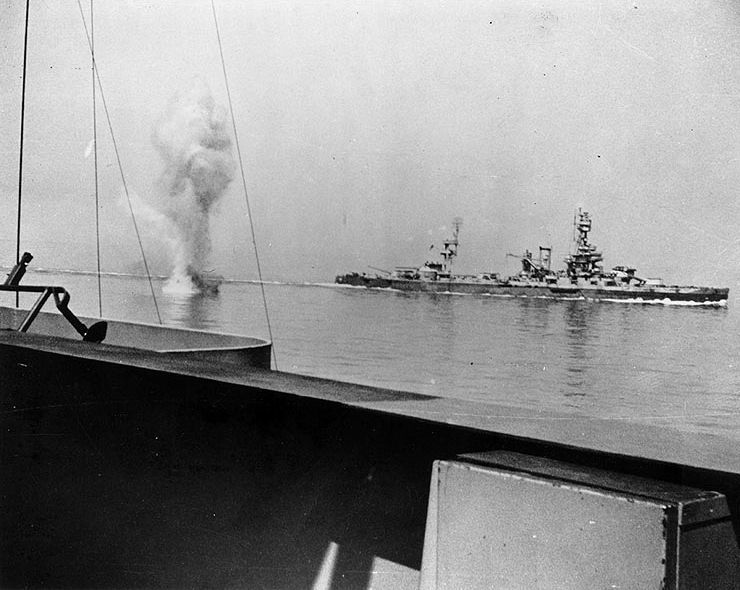
Taking Cherbourg was a big win—it gave the Allies a much-needed supply harbor. Still, engineers spent weeks repairing the port before it could really be used.
Nearby, Port-en-Bessin—linking Gold Beach and Omaha Beach—became another important logistics hub, secured by British commandos to support the Cotentin campaign.
Visiting Montebourg’s D-Day Historical Sites
Montebourg saw some of the fiercest fighting as American troops pushed inland from Utah Beach. The town became a key battleground as the Allies worked to secure the Cotentin Peninsula in the days after D-Day.
Stay steps from Omaha Beach and historic landmarks. Best rates on local accommodations.
Key Memorials and Monuments
The Montebourg War Memorial stands right in the center of town, honoring both locals and Allied soldiers who fought here. It includes inscriptions about the town’s liberation by the 4th Infantry Division on June 19, 1944, after some truly hard fighting.
Near the church, there’s a plaque marking where 101st Airborne paratroopers set up a temporary command post—a strategic spot during the push from Utah Beach inland.
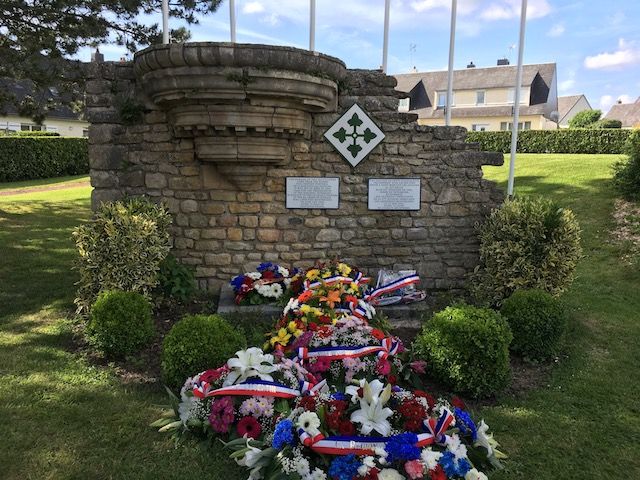
Just outside town, the Montebourg Military Cemetery holds the graves of soldiers who died during the Normandy battle. It’s a peaceful, well-kept place to reflect.
Other Notable Sites Nearby:
- Utah Beach Museum (15 miles)
- Airborne Museum at Sainte-Mère-Église (8 miles)
- Azeville Battery (10 miles)
See available accommodations near Monebourg.
Historical Reenactments and Guided Tours
During the D-Day anniversary week in early June, Montebourg hosts reenactments showing the town’s liberation. Locals and history fans bring out vintage vehicles and gear to recreate the arrival of American troops.
You can book specialized battlefield tours focused on Montebourg’s role in the Normandy campaign. Local guides lead 2-3 hour walks, following the Allied path through town and sharing stories from both soldiers and civilians.
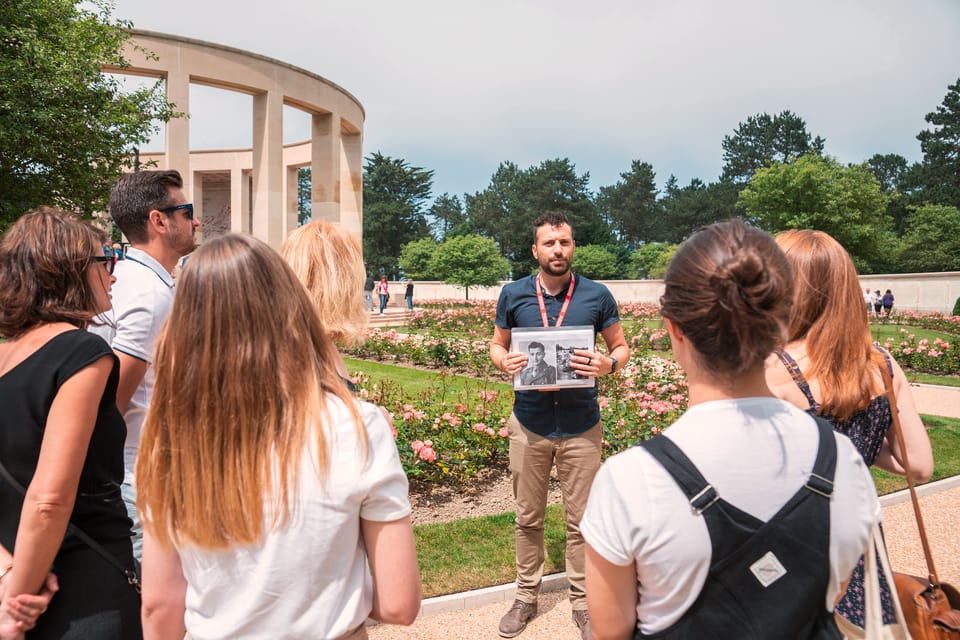
The Montebourg History Association has self-guided tour maps at the tourist office. These highlight key sites, with QR codes linking to old photos and firsthand accounts.
If you want to dig deeper, the Utah Beach Landing Museum nearby offers full-day tours that cover Montebourg and surrounding battlefields.
Recommended D-Day Tours:
- American D-Day Sites in Normandy Full-Day Tour
- American D-Day Sites in Normandy Half-Day Tour
- Half-Day Normandy WWII Sidecar Tour
- Full-Day US Battlefields of Normandy Tour
Montebourg Today: Museums and Cultural Experiences
Montebourg gives visitors plenty of ways to connect with its WWII history, but it’s not just about the past. The town has set up thoughtful exhibits and commemorative events to honor its role in the D-Day campaign, while still feeling like a lived-in Norman community.
World War II Museums and Exhibitions
The Montebourg Historical Center, inside the restored town hall, packs a lot into a compact space. You’ll see original photos, maps, and artifacts found in the fields around Montebourg.
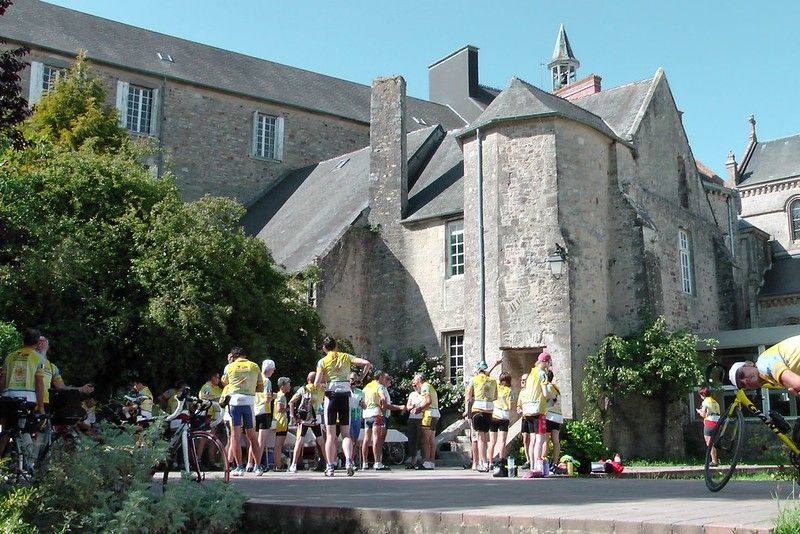
Personal stories from locals who survived the occupation and liberation are front and center. The highlight? A detailed diorama showing Montebourg before and after the bombing that destroyed nearly 80% of the town.
The Liberation Room at the community center focuses on the American 4th Infantry Division’s fight here. Expect authentic uniforms, weapons, and interactive maps showing how the battle unfolded.
See available accommodations near Monebourg.
Modern Commemoration Events
Montebourg marks its WWII history with several annual events. The biggest is the Liberation Festival in June, which features reenactments, veteran ceremonies, and programs for all ages.
There’s also the “Path of Remembrance” walking tour during the summer. Local guides take you to key sites, explaining their wartime stories. Stops include the memorial square and a few buildings that survived the bombings.
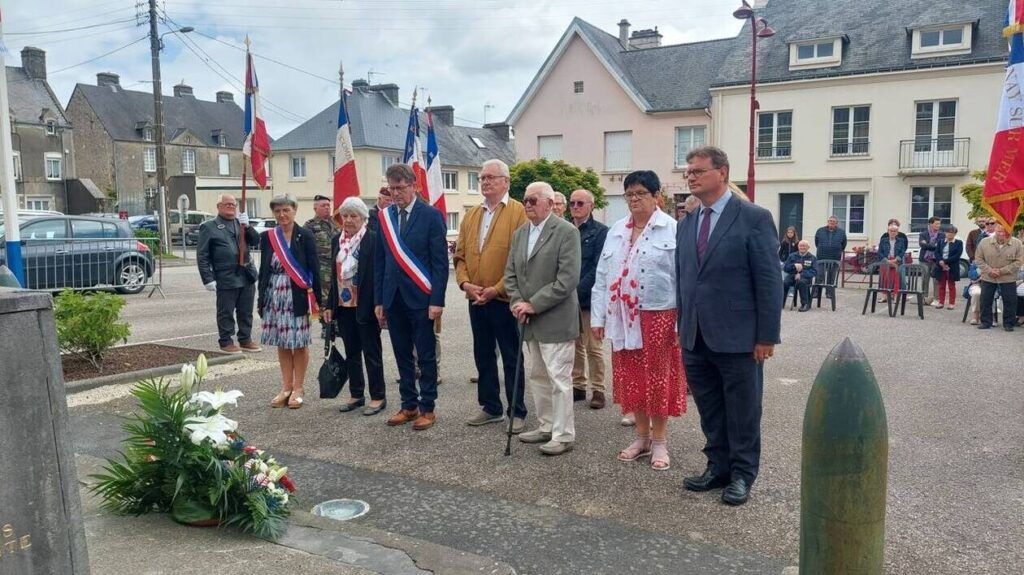
Every five years, Montebourg hosts a larger international commemoration, drawing visitors from the US, UK, and across Europe. These events include military bands, film screenings, and rare chances to meet veterans or their families.
Practical Visitor Information
Planning a trip to Montebourg and the D-Day sites means sorting out how to get around and where to stay. The town’s a convenient base for the landing beaches and offers cozy places to sleep and classic Norman food.
Find the perfect base for exploring Utah Beach, Pointe du Hoc, and beyond.
How to Get to Montebourg and Nearby Historic Beaches
Montebourg sits roughly 15 miles southeast of Cherbourg and the same distance northwest of Utah Beach. Driving is by far the easiest way to get there. From Paris, take the A13 to Caen, then N13 to Cherbourg.
You can also take a train from Paris-Saint-Lazare to Cherbourg, then hop on a local bus or grab a taxi to Montebourg. Figure on 3-4 hours total travel time.
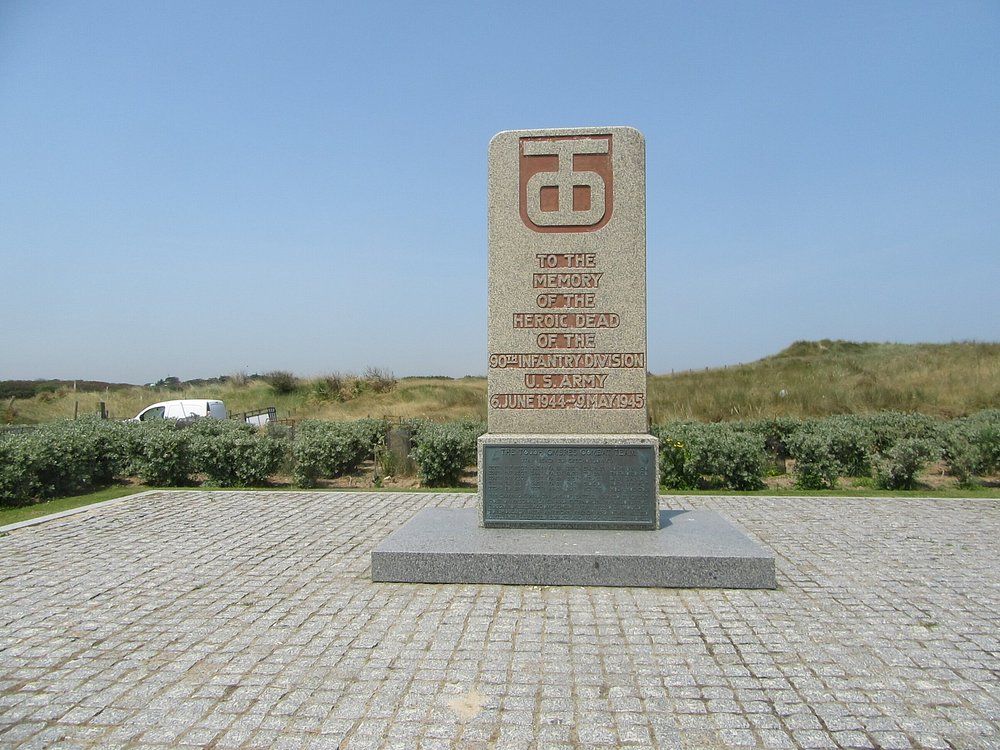
Utah Beach is about 20 minutes east by car. Omaha Beach takes about 35 minutes heading south. Public transit between the beaches is pretty limited, so renting a car really helps if you want to see more than one site.
Many folks combine Montebourg with other Normandy stops. A day trip covering Utah Beach, Sainte-Mère-Église, and Montebourg gives you a well-rounded D-Day experience.
See available accommodations near Monebourg.
Local Accommodations and Dining
Montebourg has a handful of small hotels and B&Bs for a comfortable, affordable stay. Hotel de la Gare and Auberge Normande are both central, with rooms in the €60-90 range.
For something more authentic, try a nearby farmhouse B&B. These spots let you experience rural Normandy and usually serve up breakfast with local specialties.
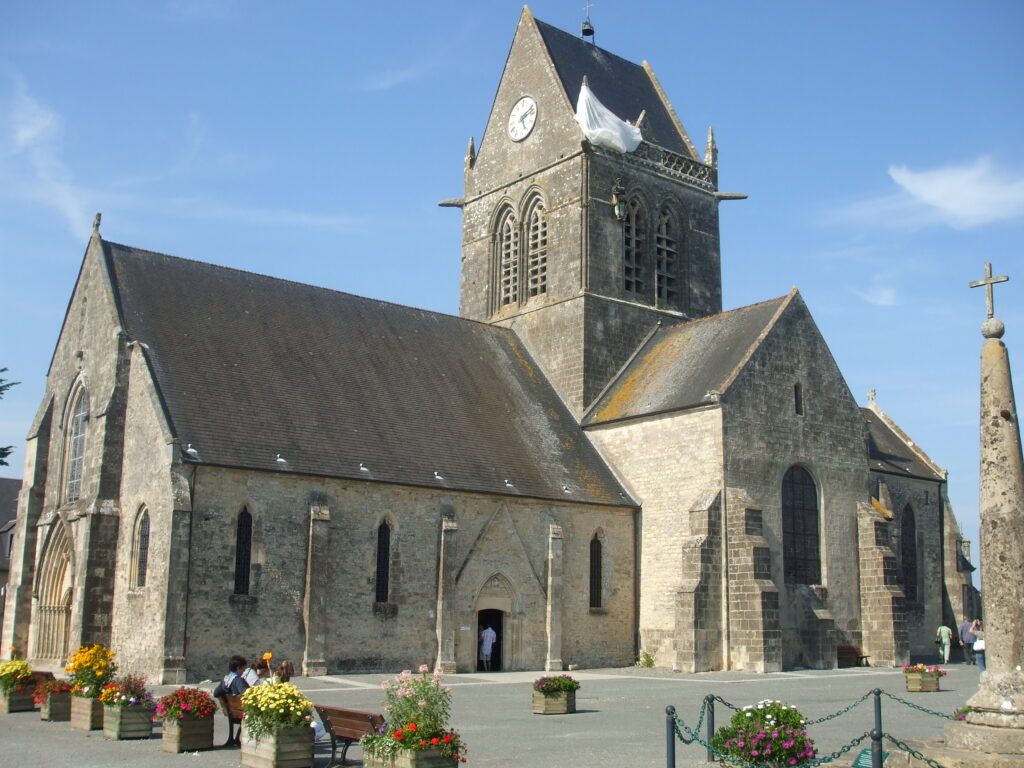
Food-wise, Montebourg keeps it simple and local. Check out:
- Café de la Place: Classic Norman dishes in the heart of town
- La Terrasse: Fresh seafood and regional specials
- Le Montebourg: Family-style meals and homemade desserts
Don’t miss:
- Fresh seafood from the coast
- Camembert and Pont-l’Évêque cheeses
- Calvados apple brandy and local cider
If you’re planning a picnic at the beach, swing by the town market (Wednesday and Saturday mornings) for fresh bread, cheese, and cured meats.
Nearby WWII Destinations and Day Trips
Montebourg makes a great base for exploring Normandy’s deep WWII history. Plenty of important battle sites and memorials are just a short drive away.
Exploring Cherbourg and Its Historical Sites
Cherbourg is only 20 miles northwest of Montebourg and has plenty of WWII connections. The Germans heavily fortified this port city during the war. You can tour La Cité de la Mer maritime museum, which covers Cherbourg’s liberation on June 26, 1944.
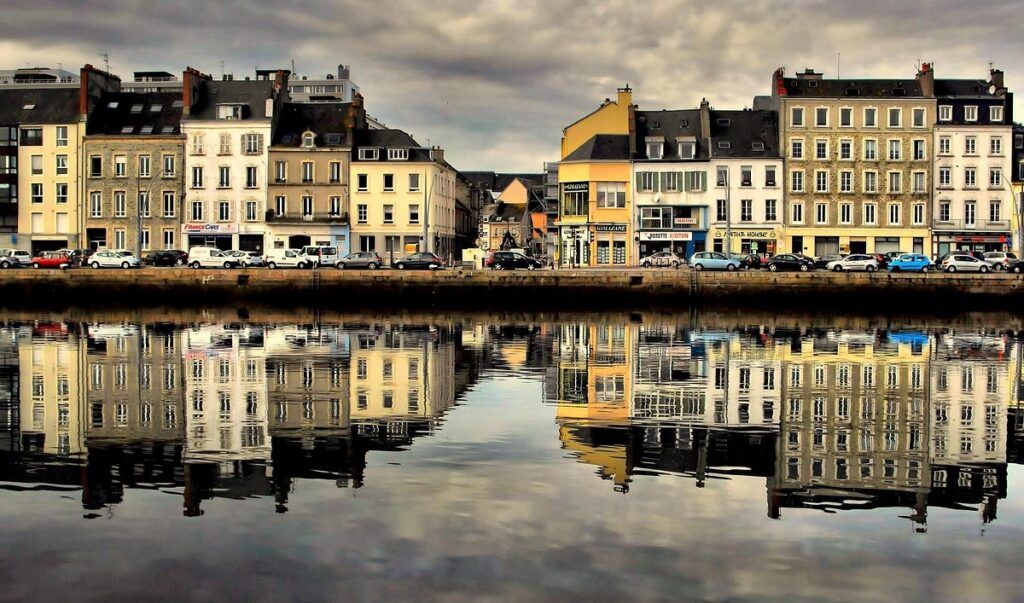
The Fort du Roule, now the Liberation Museum, offers sweeping views over the harbor that was so vital to Allied supply lines. Inside, you’ll find photos and artifacts from the occupation and liberation.
In downtown Cherbourg, several buildings still bear bullet marks from the fighting. Keep an eye out for memorial plaques marking important events around the city center.
Visiting Utah Beach, Omaha Beach, and Gold Beach
Utah Beach is just 15 miles southwest of Montebourg. The Utah Beach Landing Museum does a great job explaining how American forces established their beachhead with surprisingly few casualties. There’s even a restored B-26 bomber inside.
Omaha Beach, 25 miles south, saw the toughest fighting on D-Day. The American Cemetery above the beach holds 9,388 graves in perfect rows—a sobering sight. The curved memorial wall lists 1,557 missing soldiers.
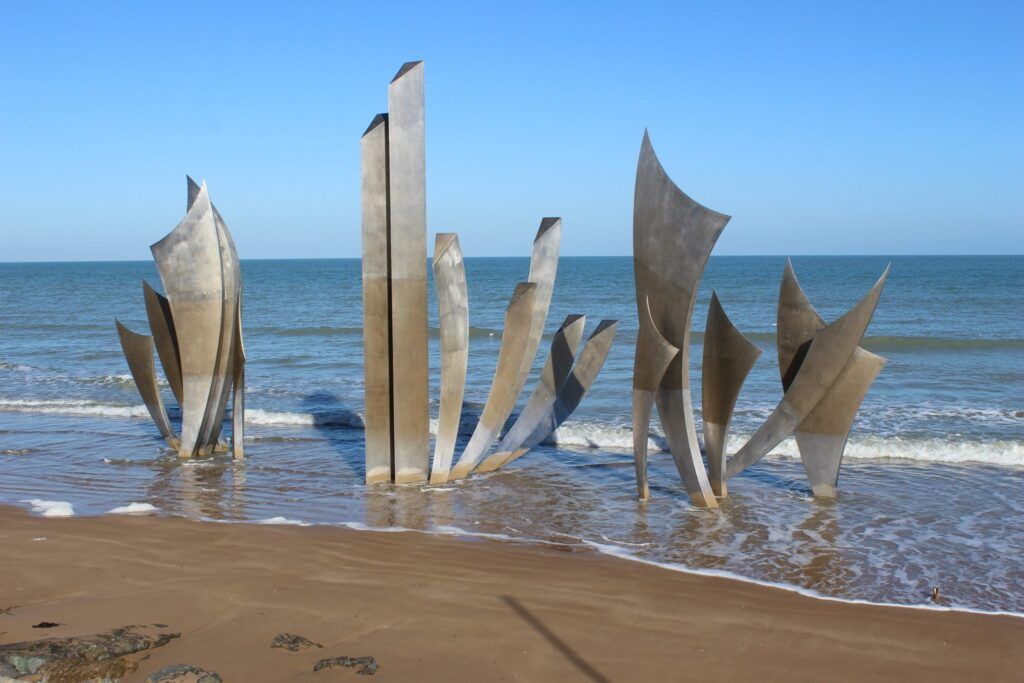
Gold Beach, about 40 miles southeast, was stormed by British troops. Stop in Port-en-Bessin, where the naval forces set up a key fuel pipeline. The Arromanches 360° Cinema gives a powerful overview of the whole Normandy invasion.
See available accommodations near Monebourg.
Find comfortable stays within moments of historic battlegrounds

